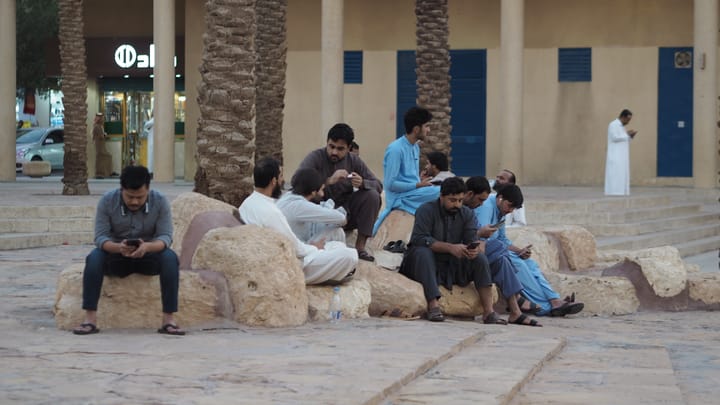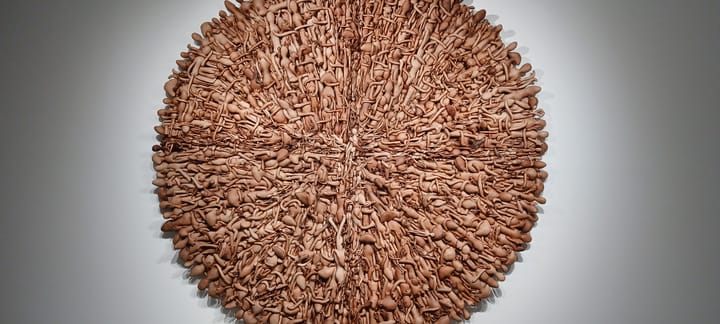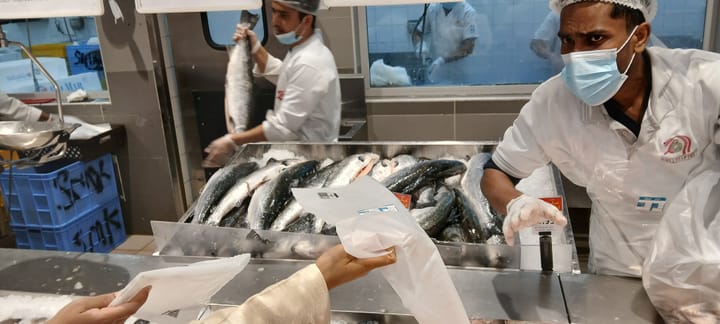Day 10 – September 10 2024 – Ankara – Göreme
Learnt a little about Ankara. It had a population of 300,000 in 1920 when Atatürk’s success in the war of independence brought him to power and he declared it the capital, after which he never set foot in İstanbul again. So it owes its present status as well as its vibrancy, although this might be said of all of Türkiye, to him.
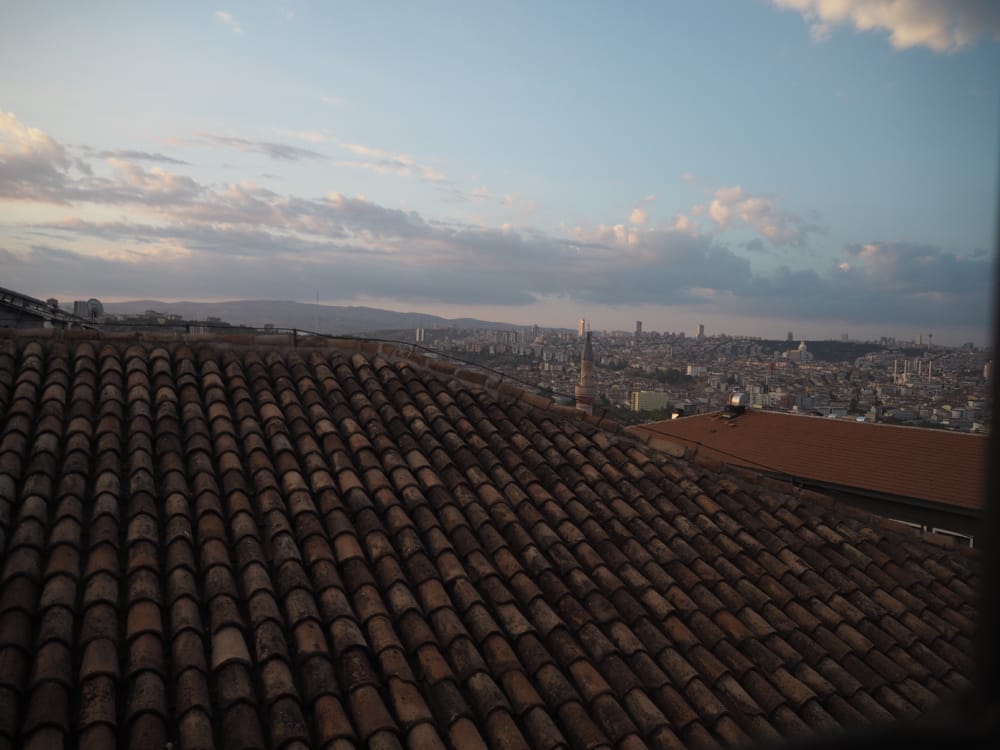
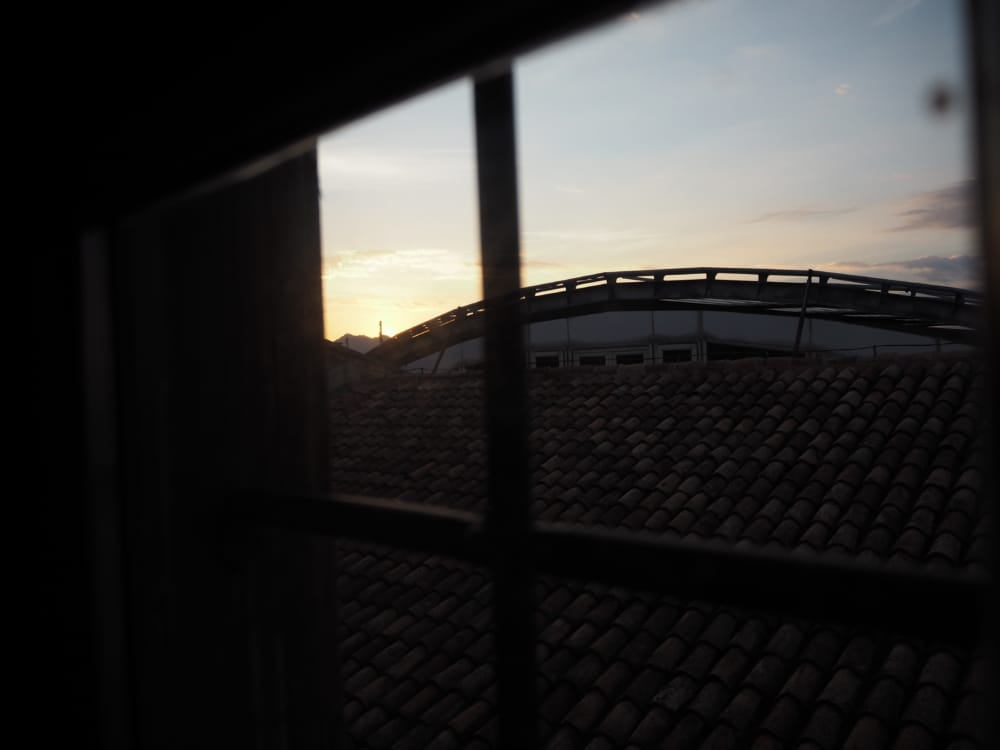
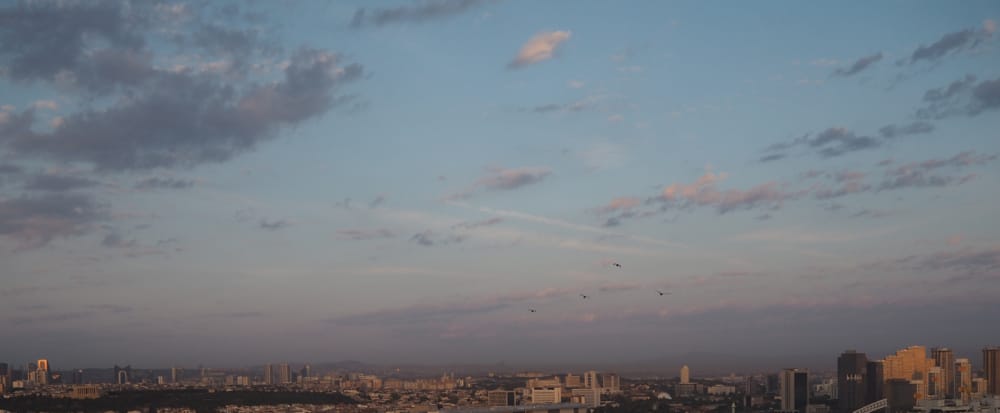
The morning picking on leftovers from last night’s room service.
Pills. An assignation at midday. And a late checkout. Enabling a …
trip to the museum. A many-domed and prize-winning restoration itself.
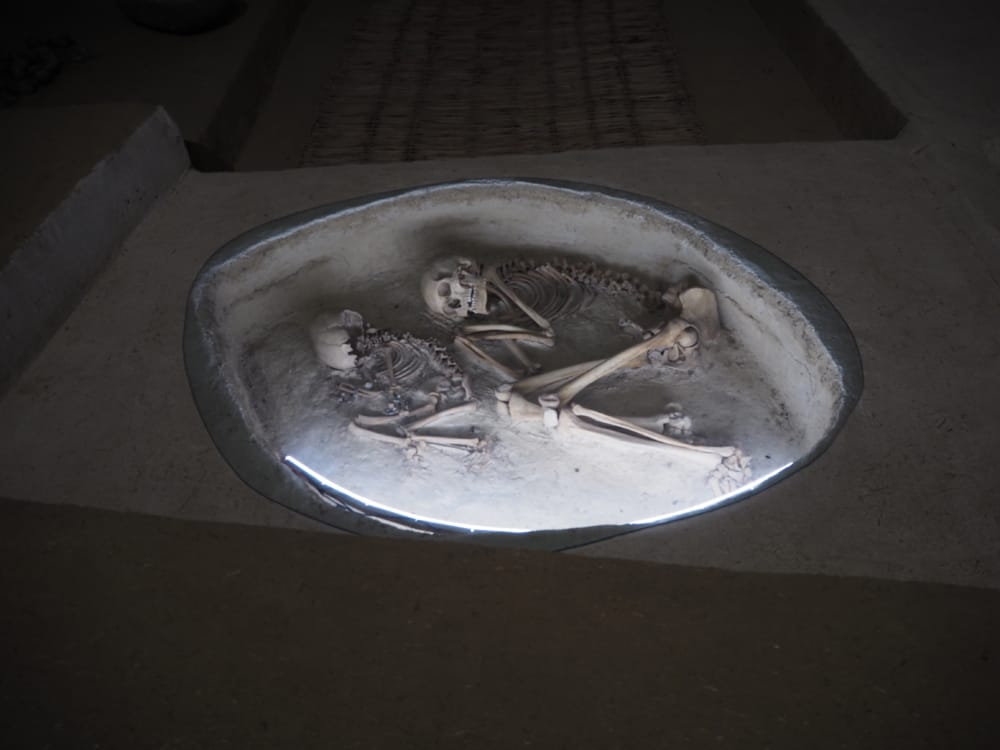
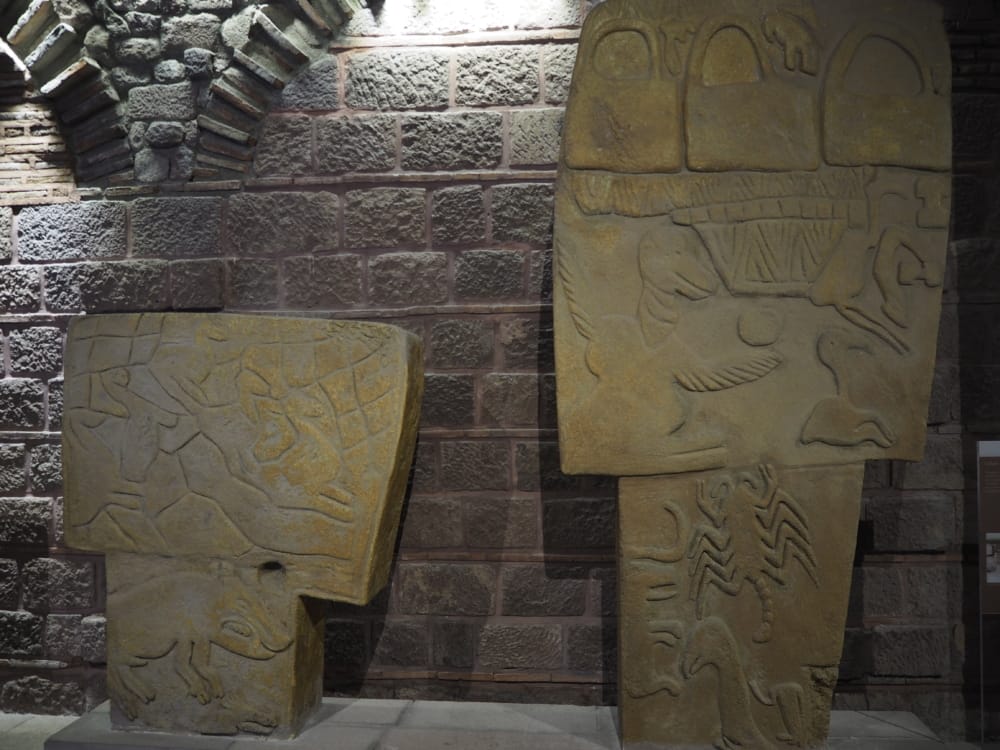
Amazed at the museum, from the archeological finds from the early Paleolithic, through mid to late, wherein obsidian blades appeared, decorative jewellery, Fertility Goddesses, sometimes twins, to Hittite cultural ascendency.
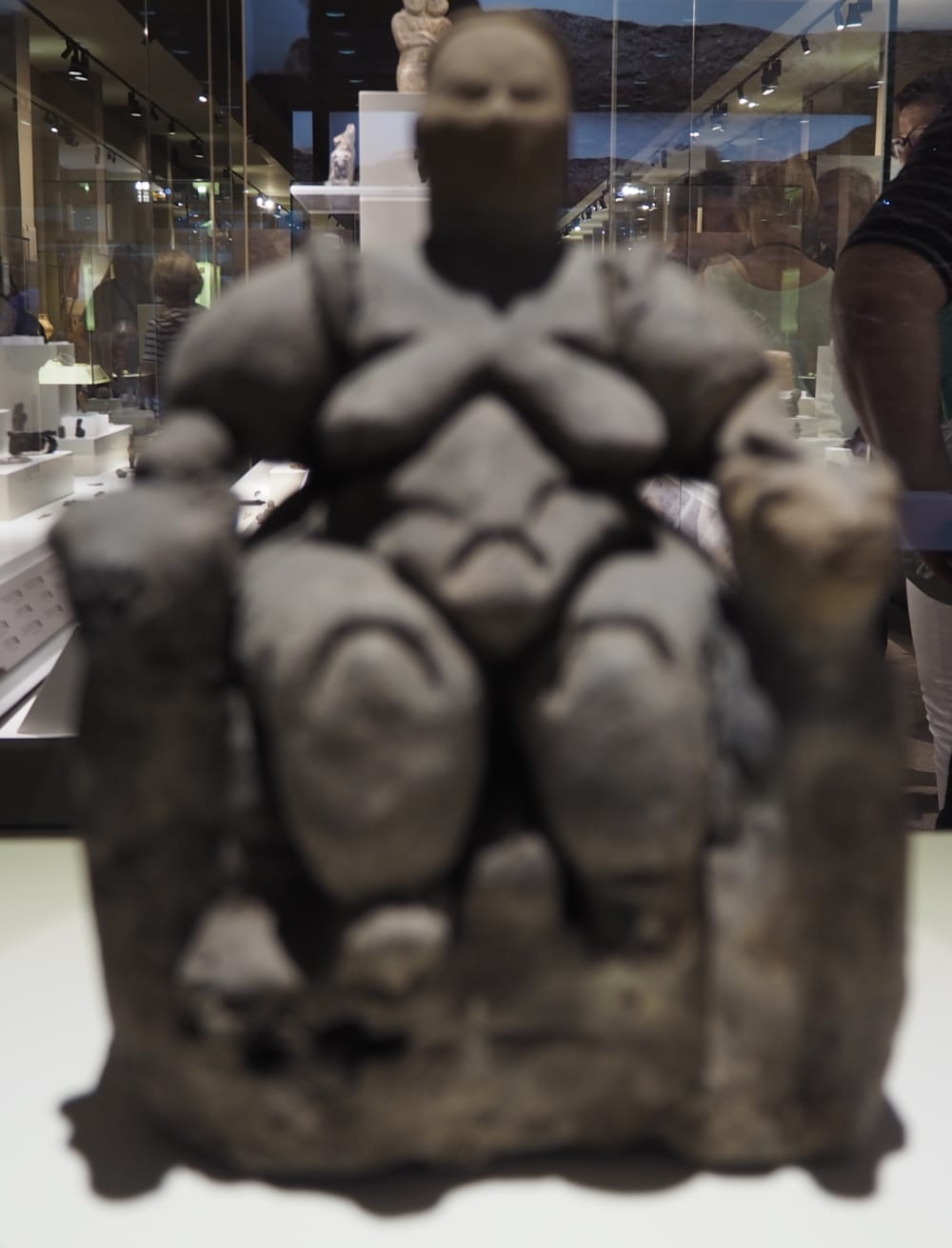
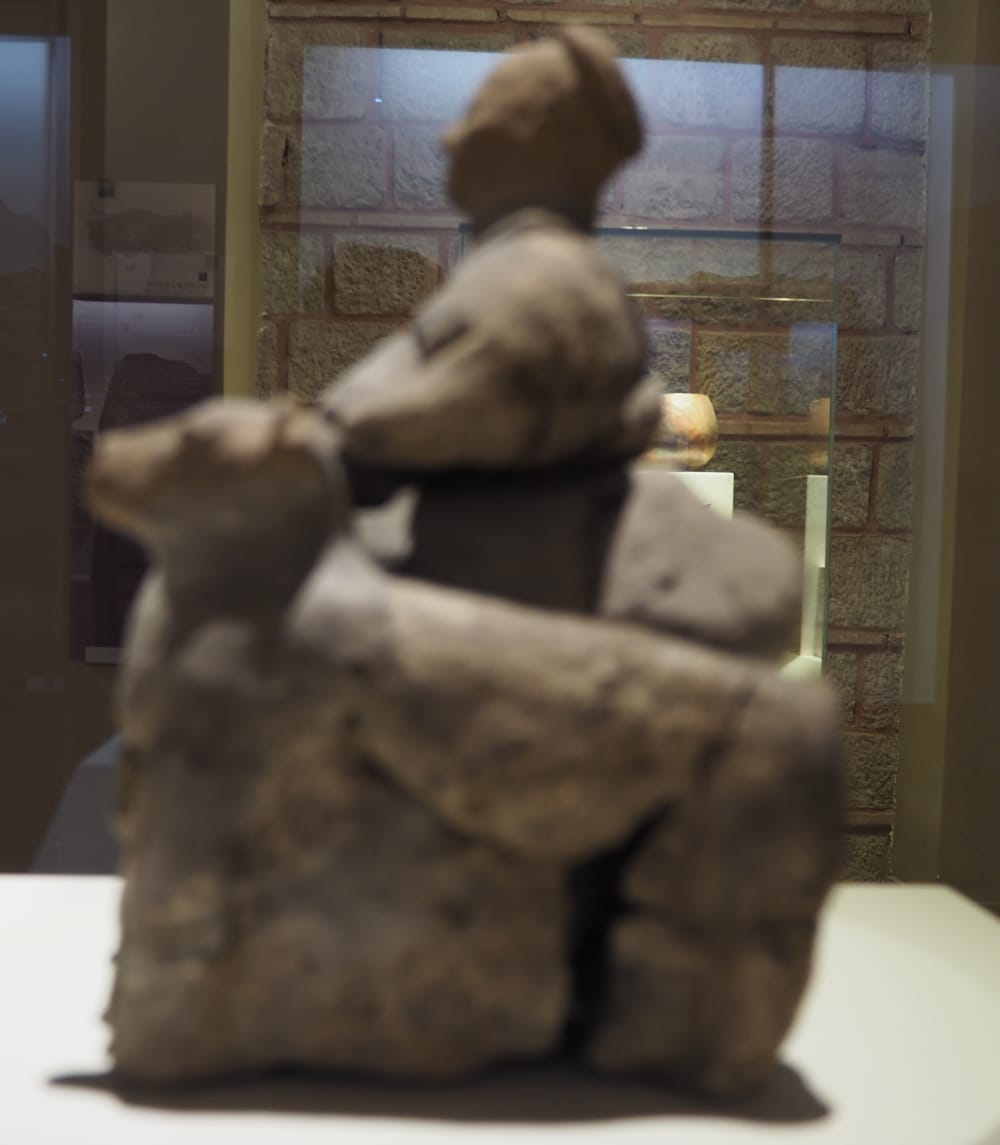
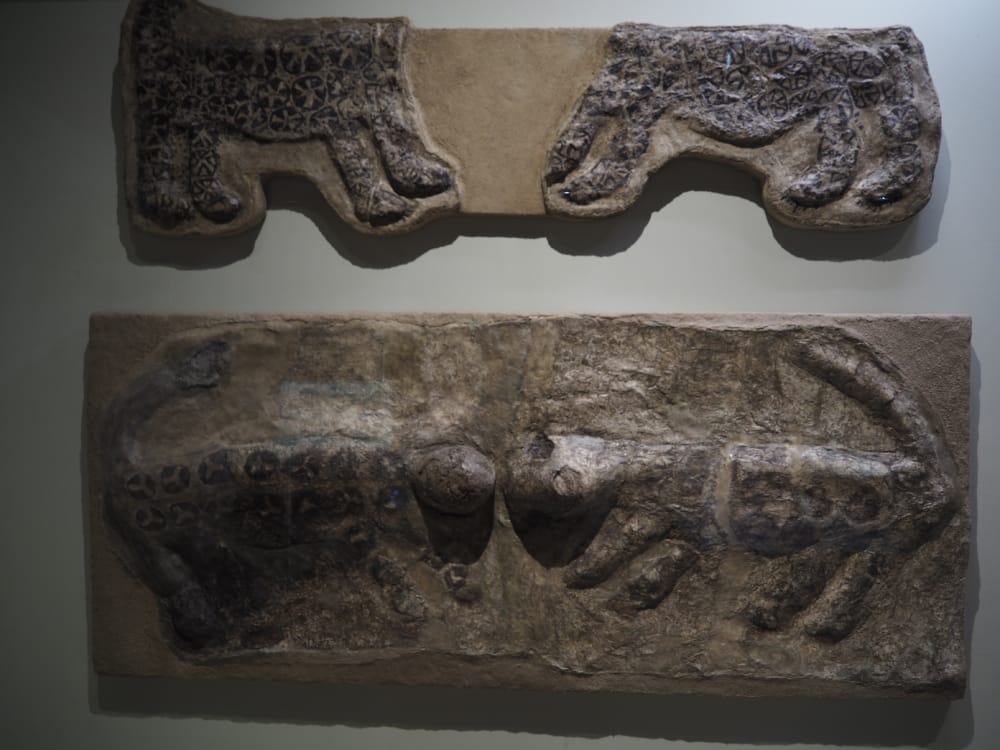
Leopards. Decorating interior walls of dwelling.
A major transformation takes place. Everything becomes refined, from the ceramic-ware to the ceremonial gear to body ornaments. Gold cups. Many-pointed stags. Beautiful forms.
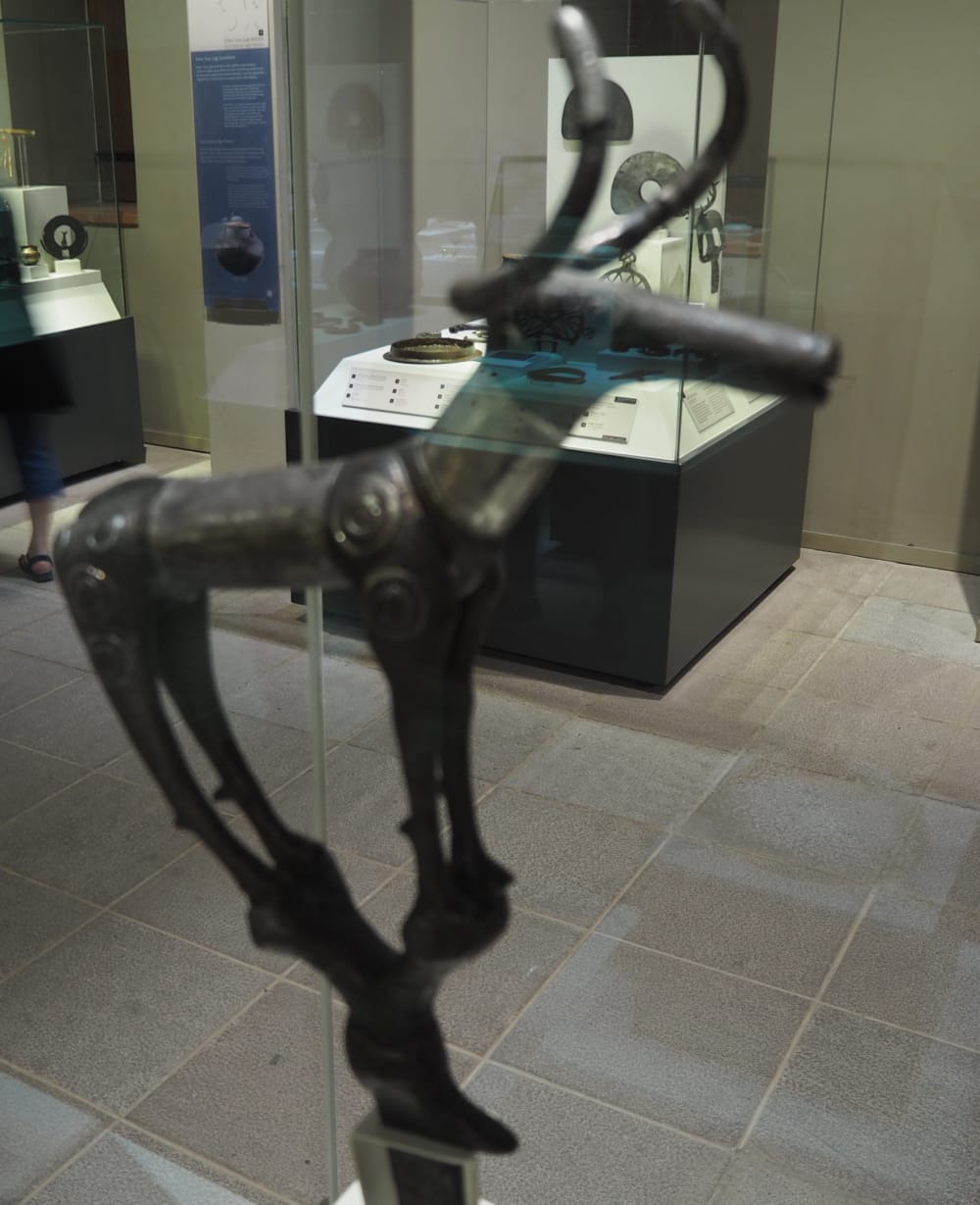
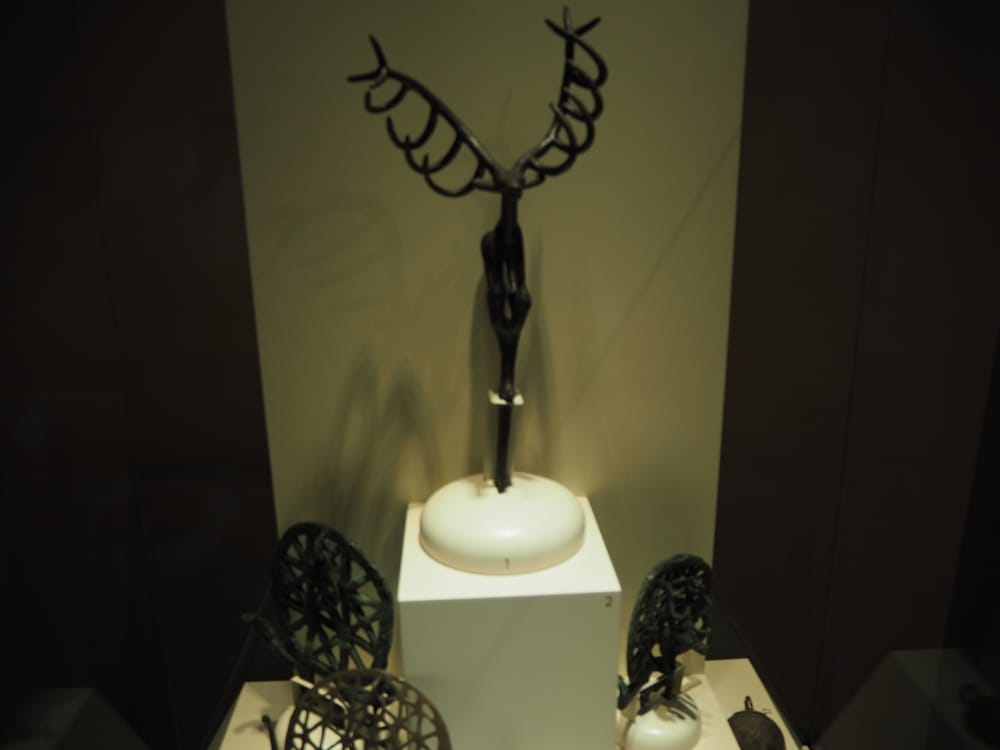
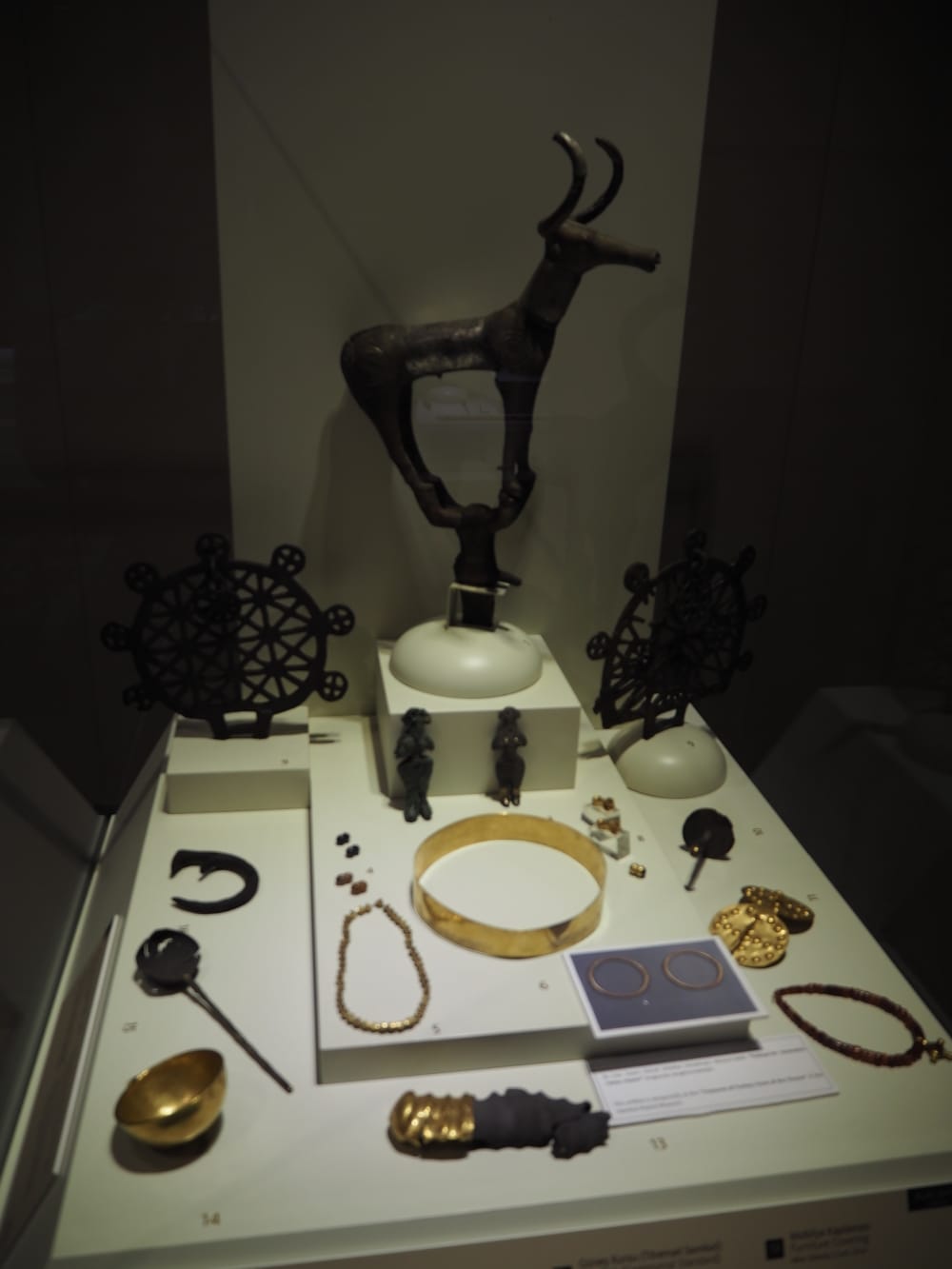
a fine gold cup.
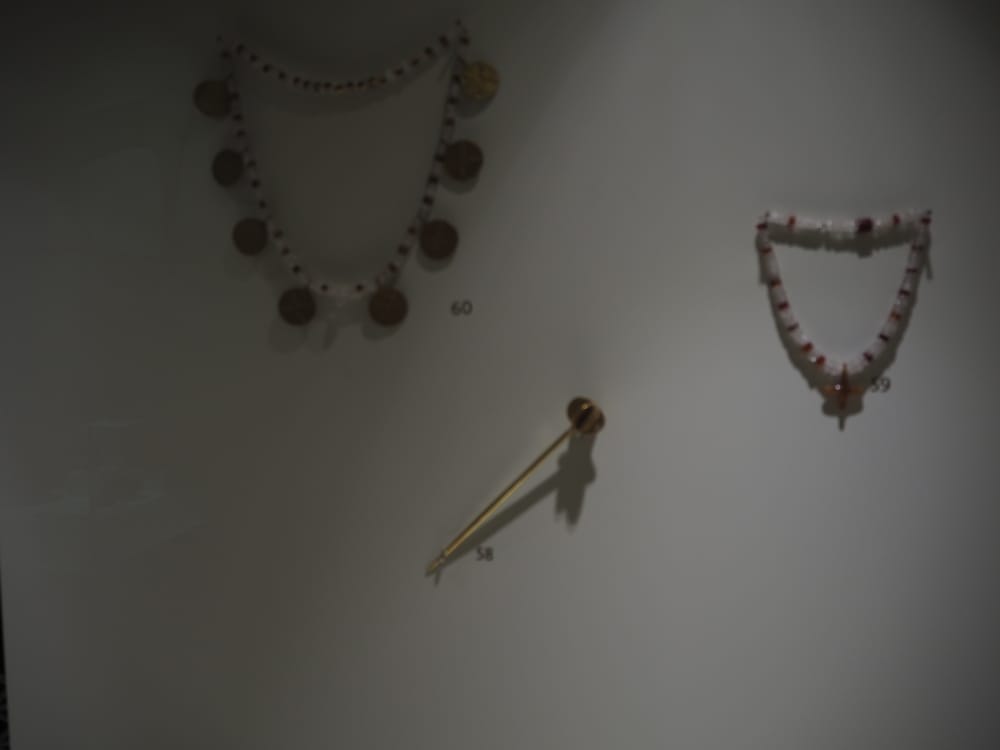
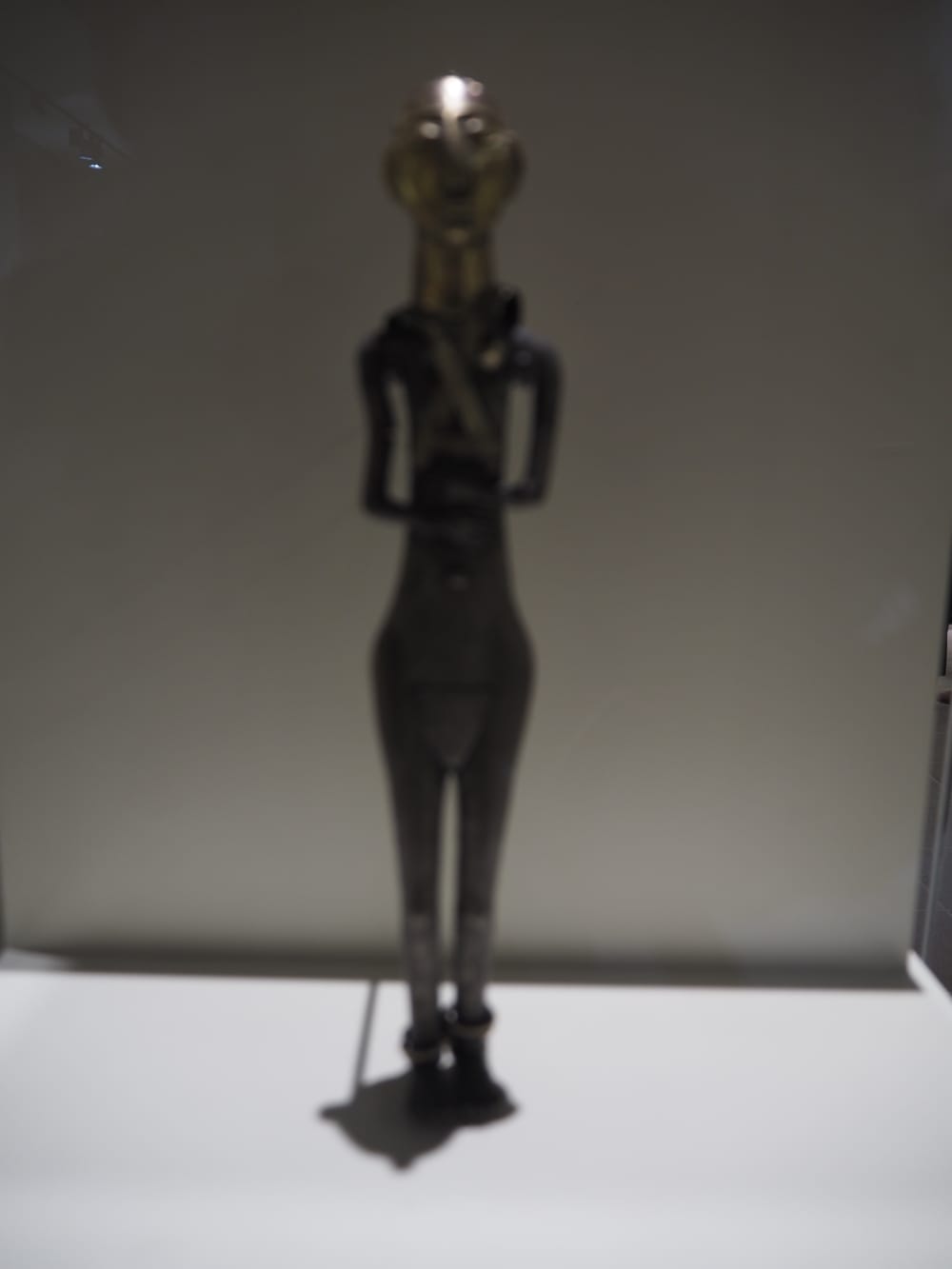
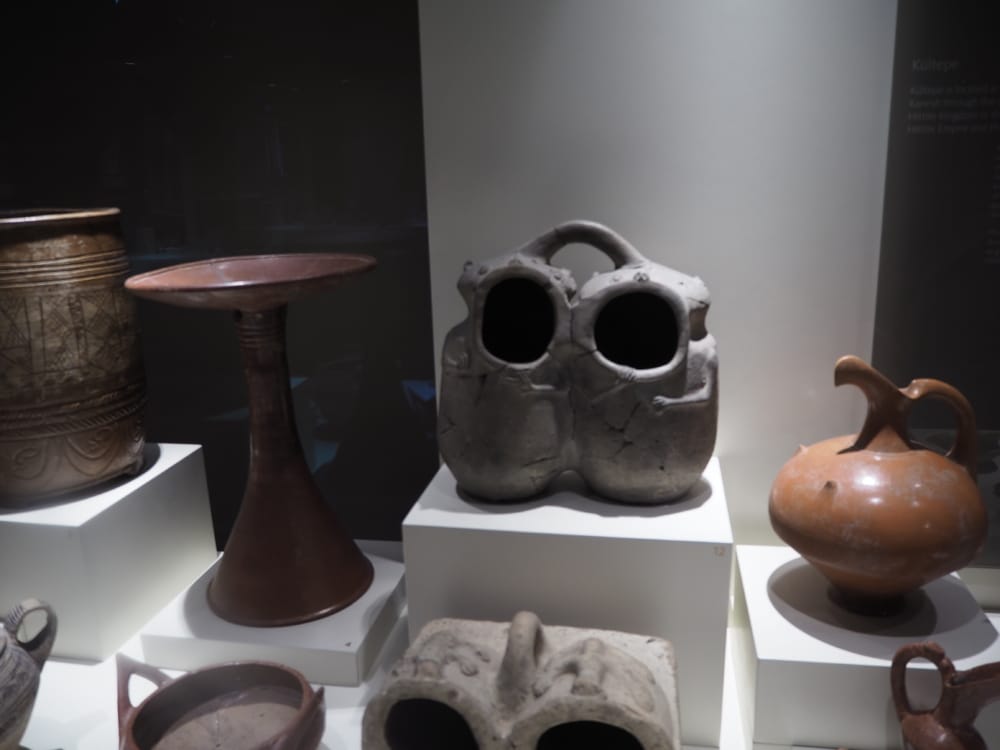
And then books, in a sort of cuneiform, 500 years after its appearance in Sumeria, so, now 2,500 BCE, on a single round cornered pillow of clay. Some of them were wrapped in another layer of clay for protection, like a hardback. Verdicts of judgement. The Assyrian sentenced to trial by the river god. If he survived he was not guilty. The nuptial agreement of an Assyrian with a Hittite. The divorce agreement, initiated by the wife, proving her equal status in the availability to her of this recourse.
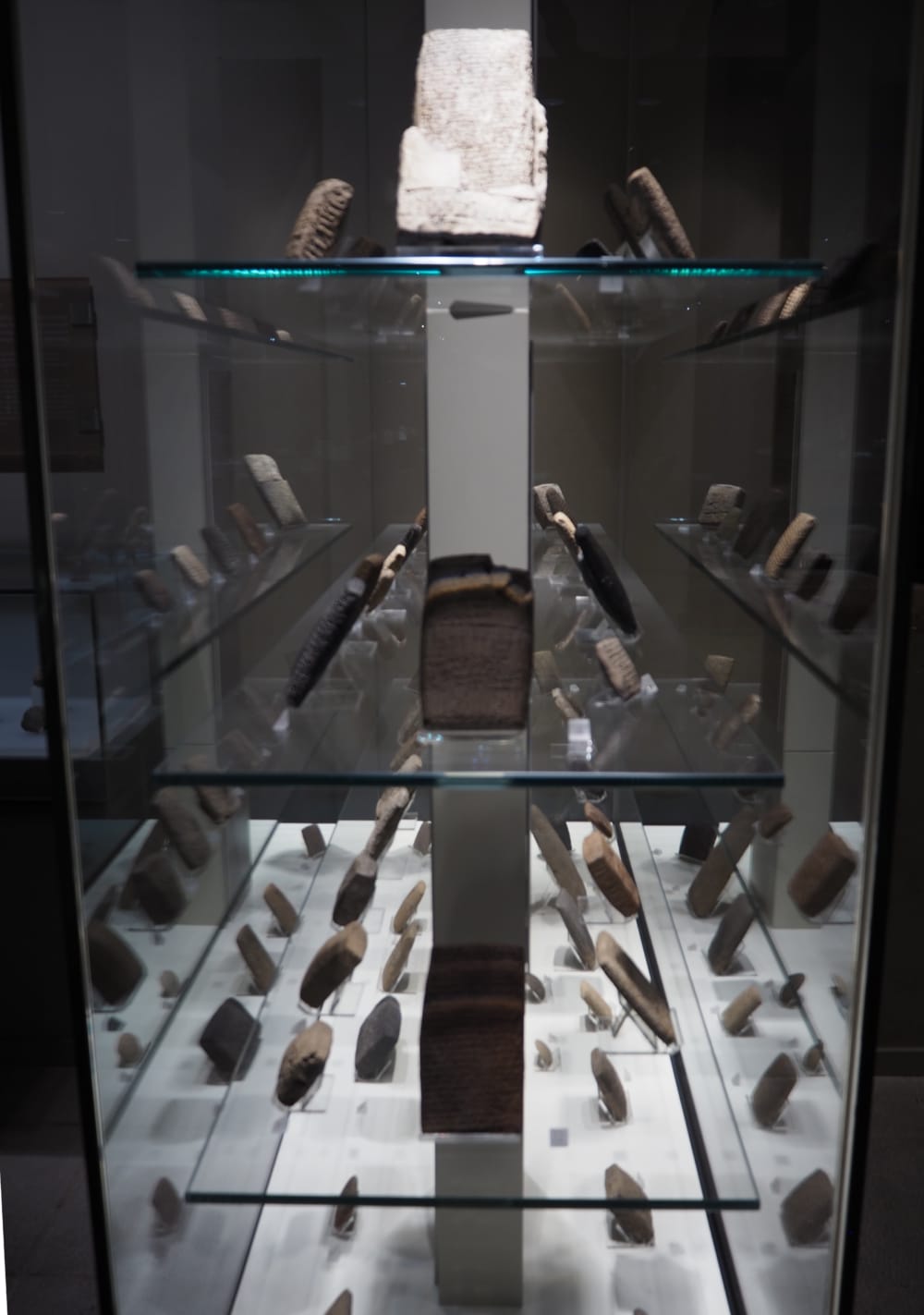
And miniature things. Little goddesses and gods. Tiny cups. Nonsensically small things, a passion for miniaturisation. … So that by the time the Roman and following Byzantine periods arrived (albeit that the museum never mentioned Byzantium) the classical forms, perhaps through their familiarity, failed to impress.
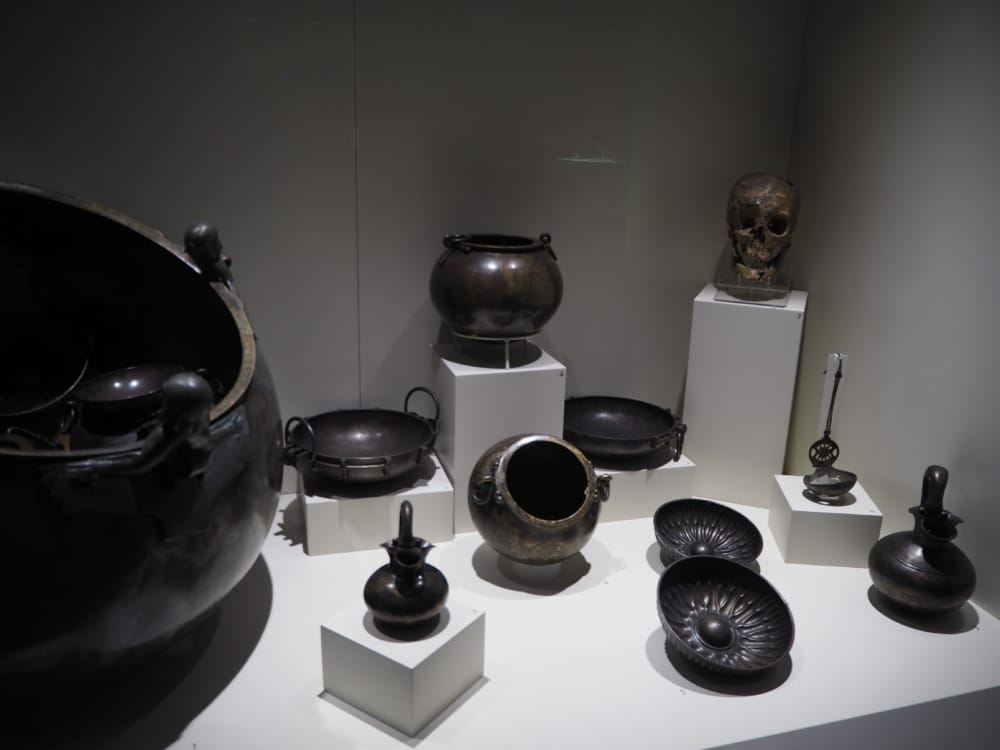
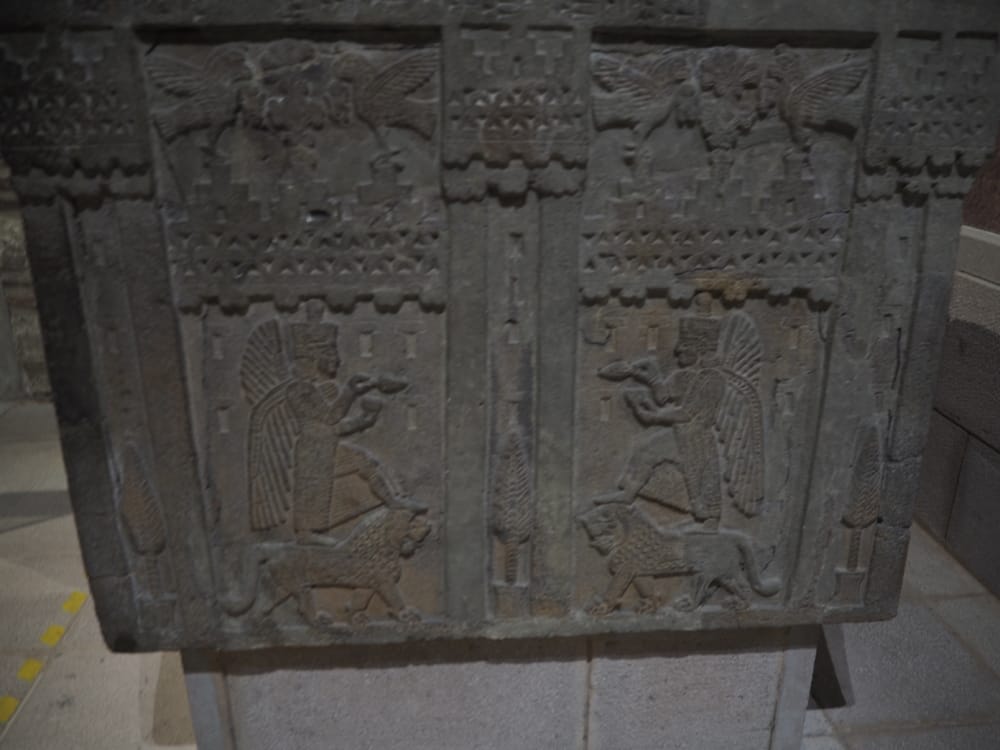
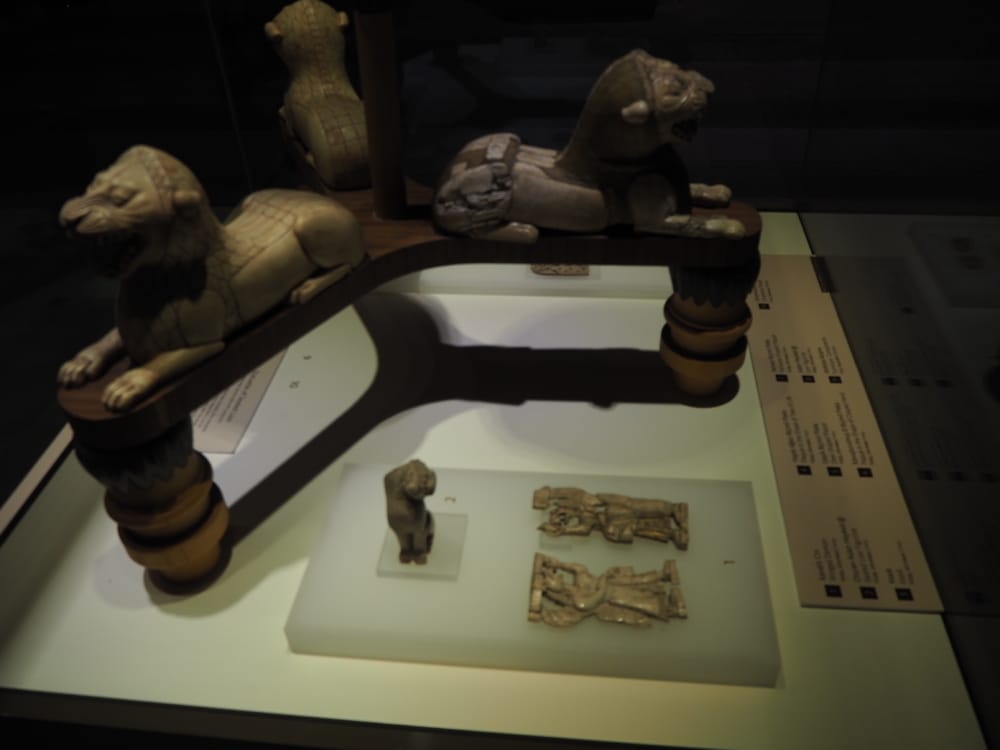
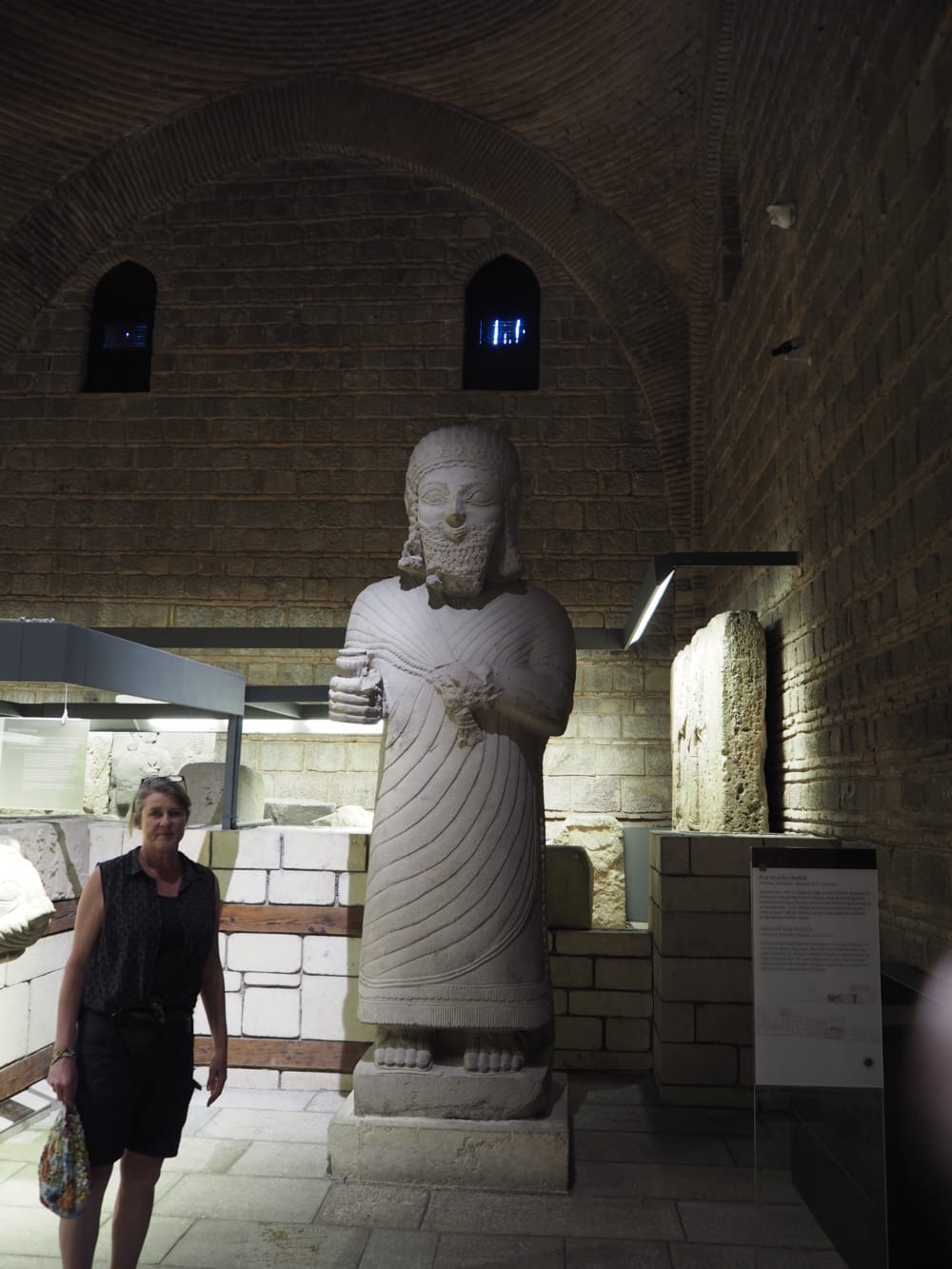
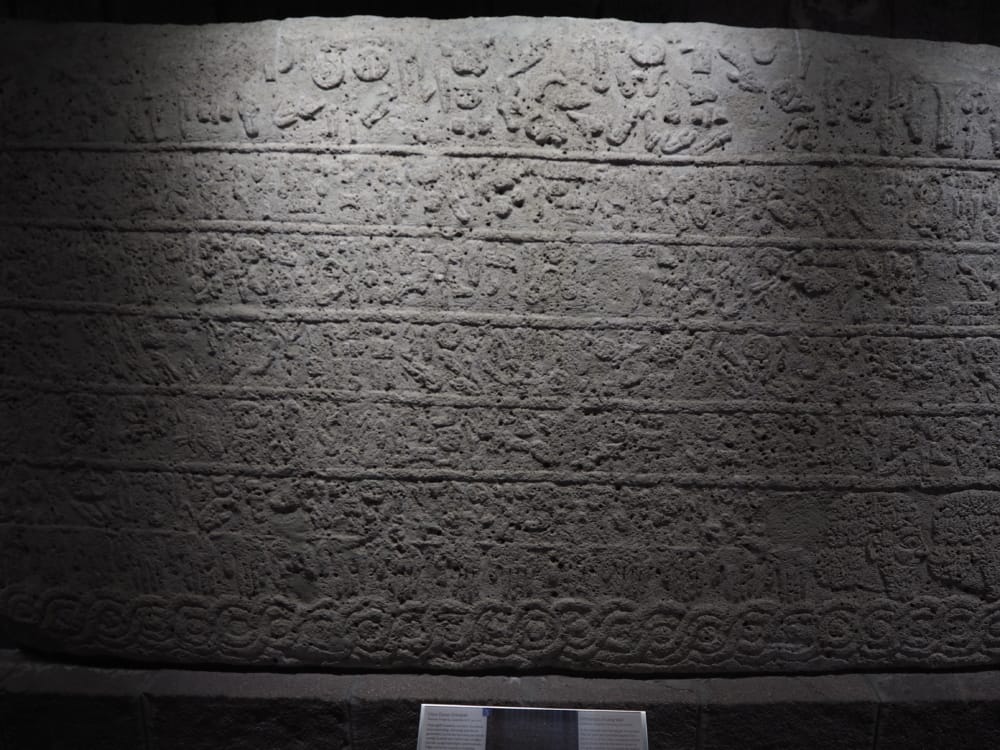
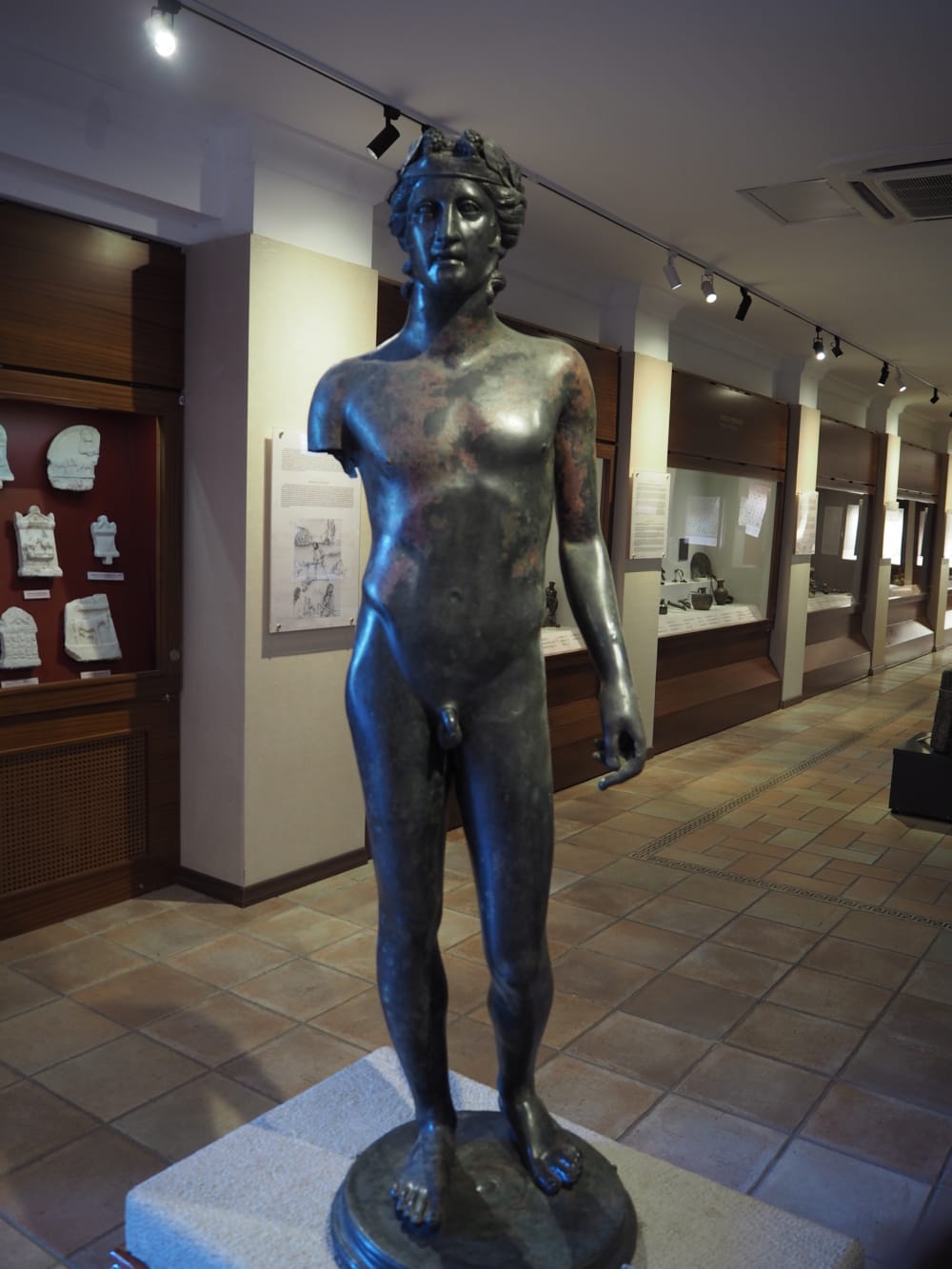
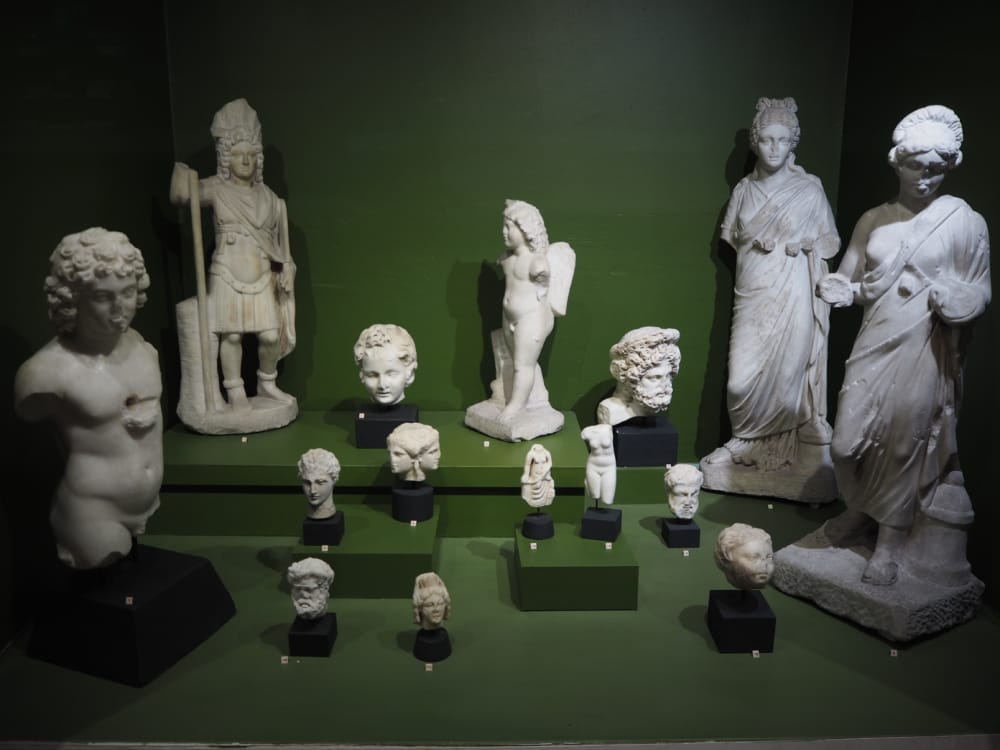
Marcus Aurelius is here,
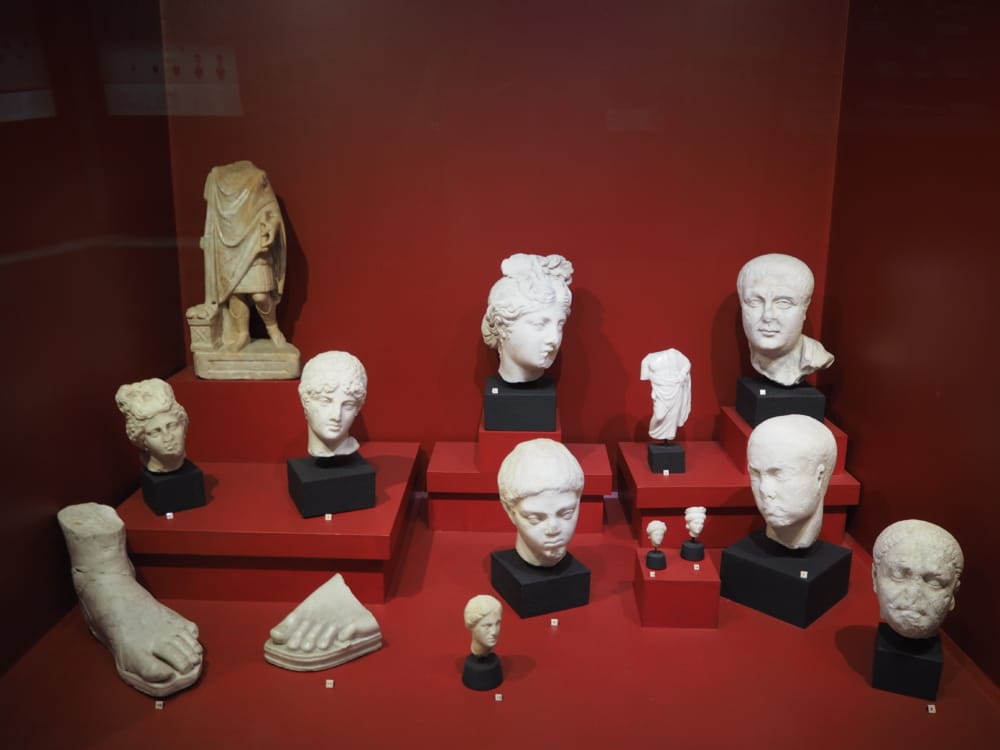
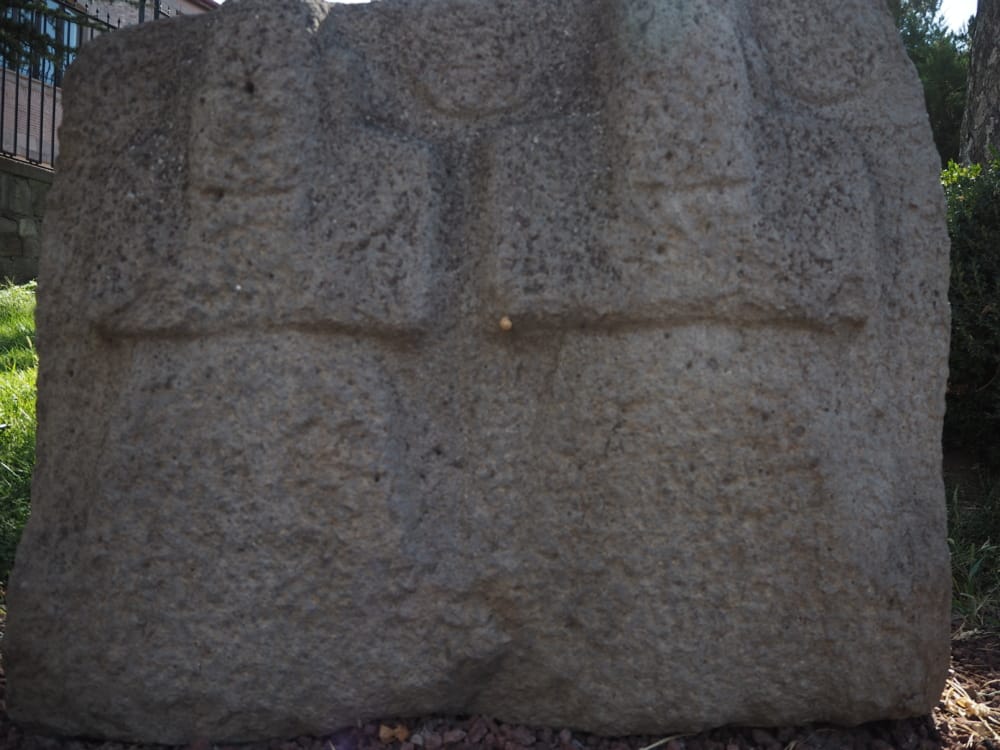
parting shots of the Divan, our beautiful room,
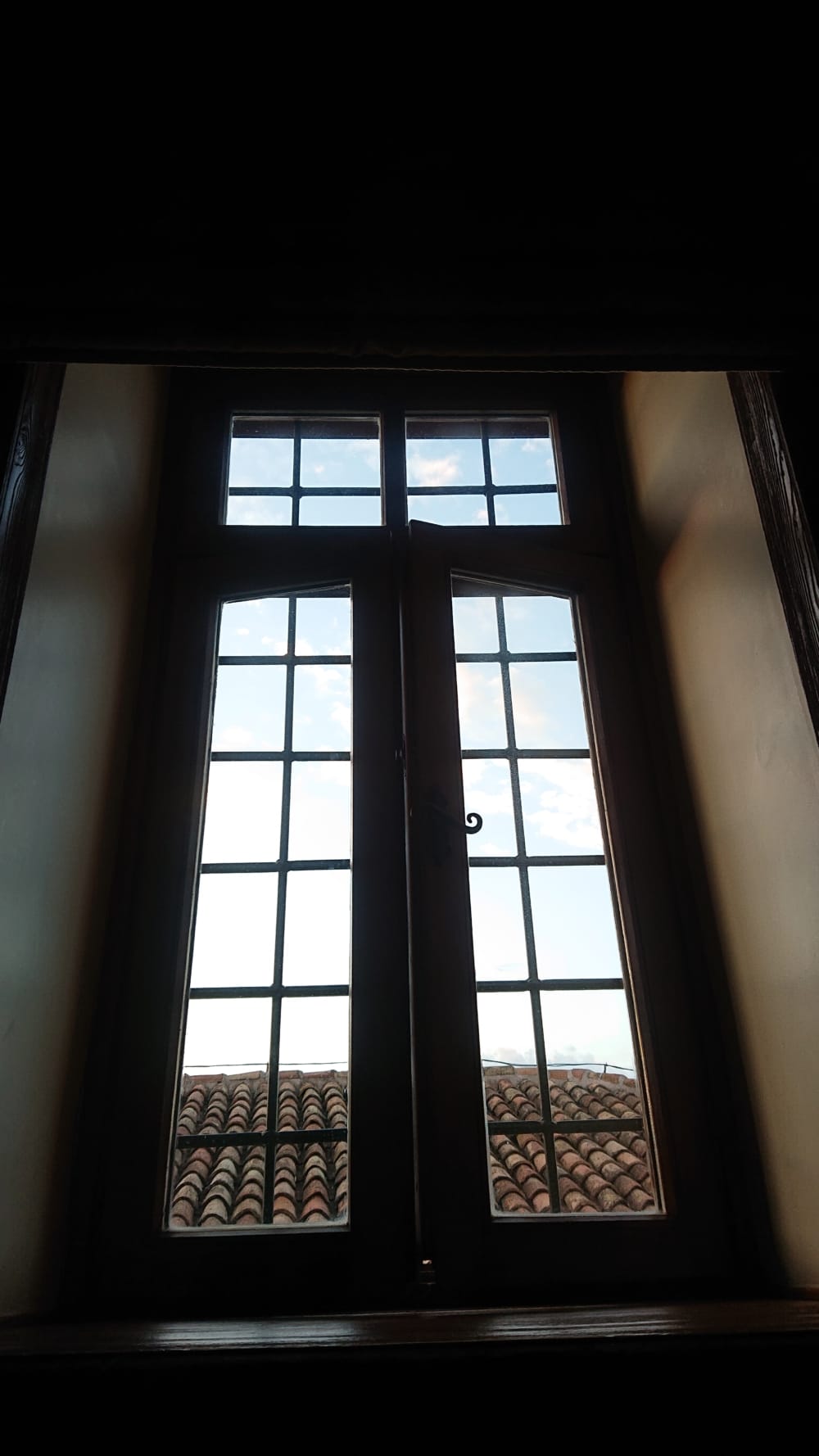
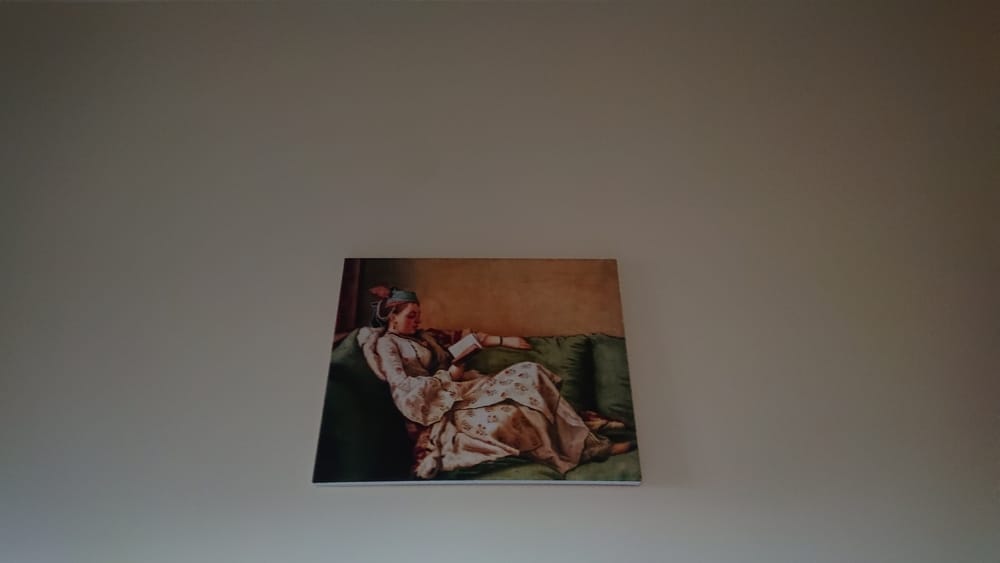
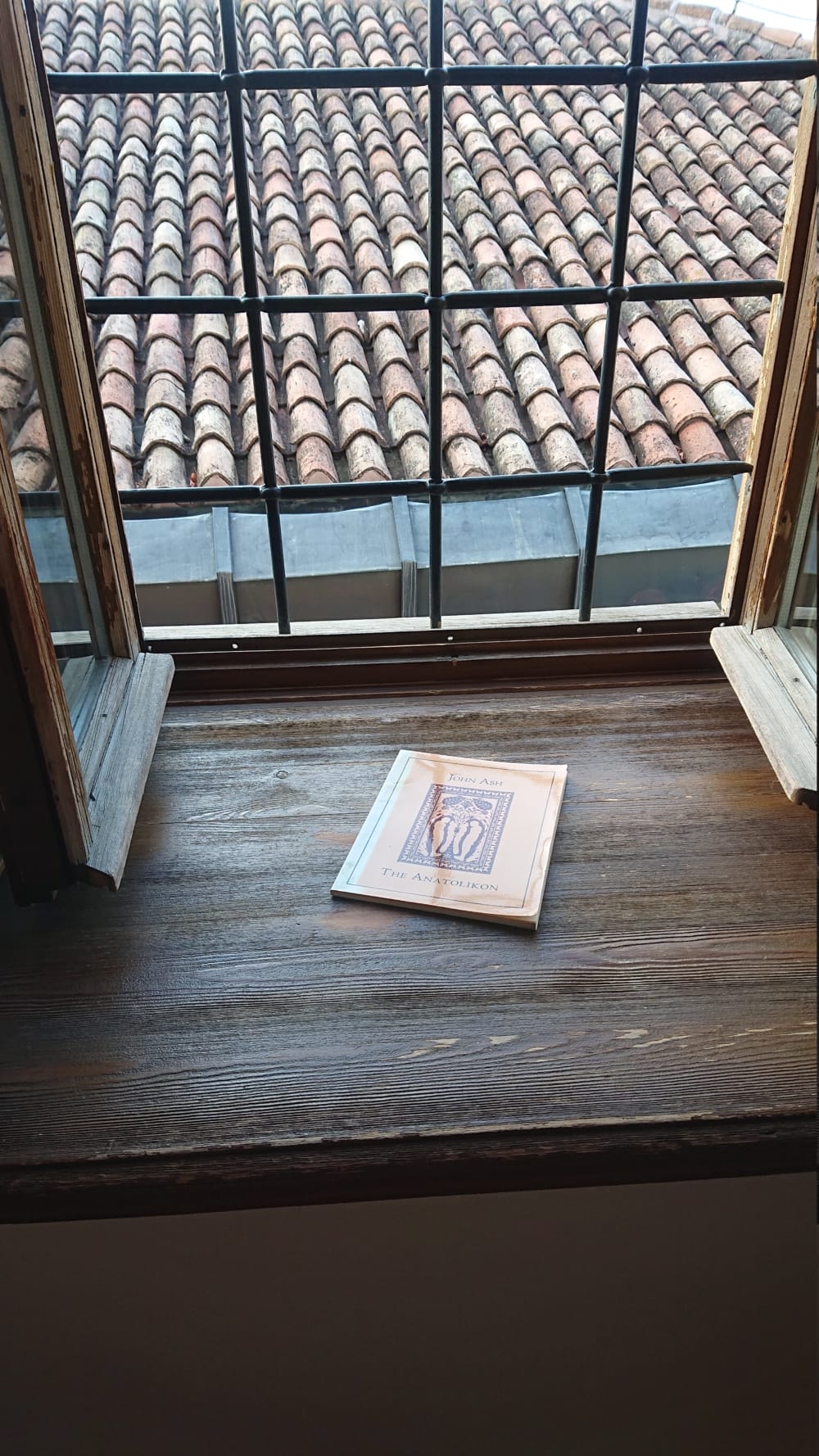
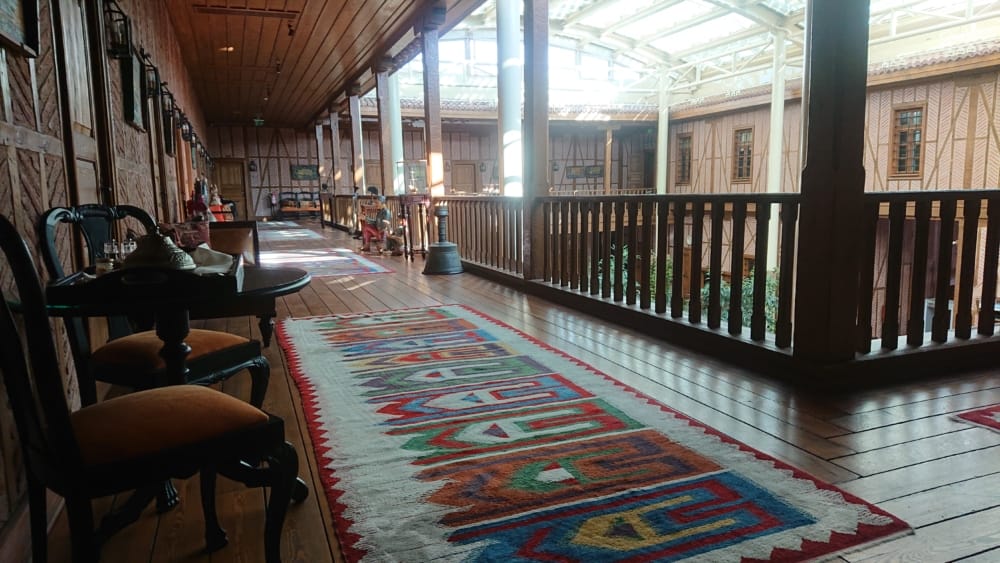
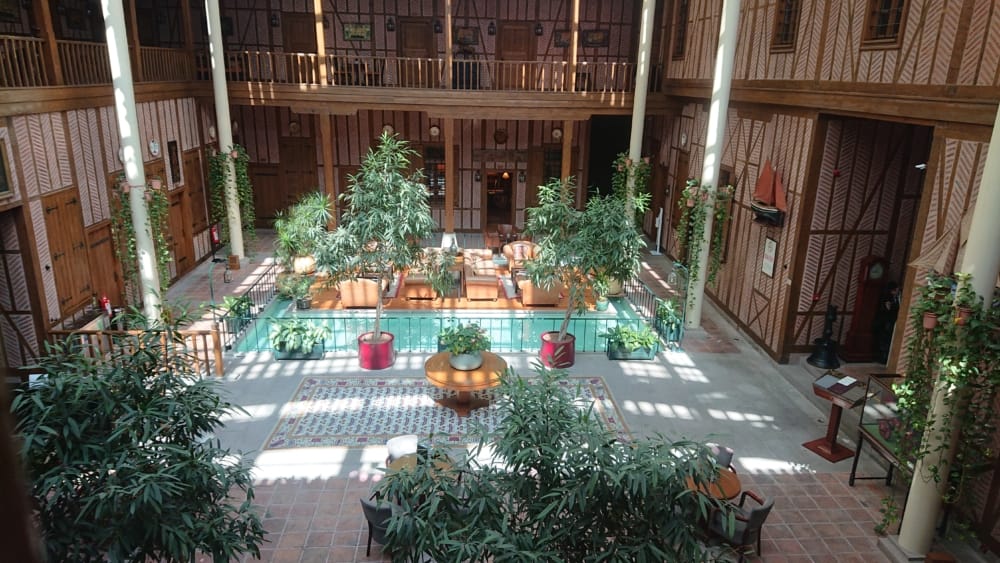
And now, to Göreme, after that assignation mentioned, for picking up a rental car. Driving out of Ankara. One strange passage, where we missed the turn-off and the cellphone led us through a shopping mall carpark to get us back on the otoyolu, motorway. And more brown country to pass through …
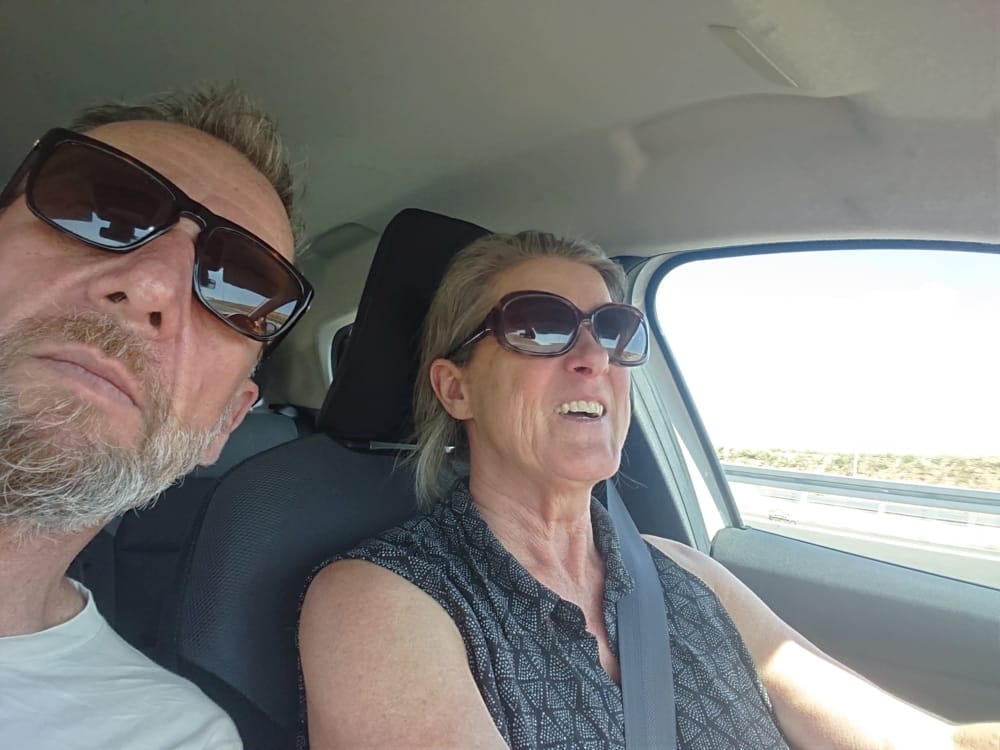
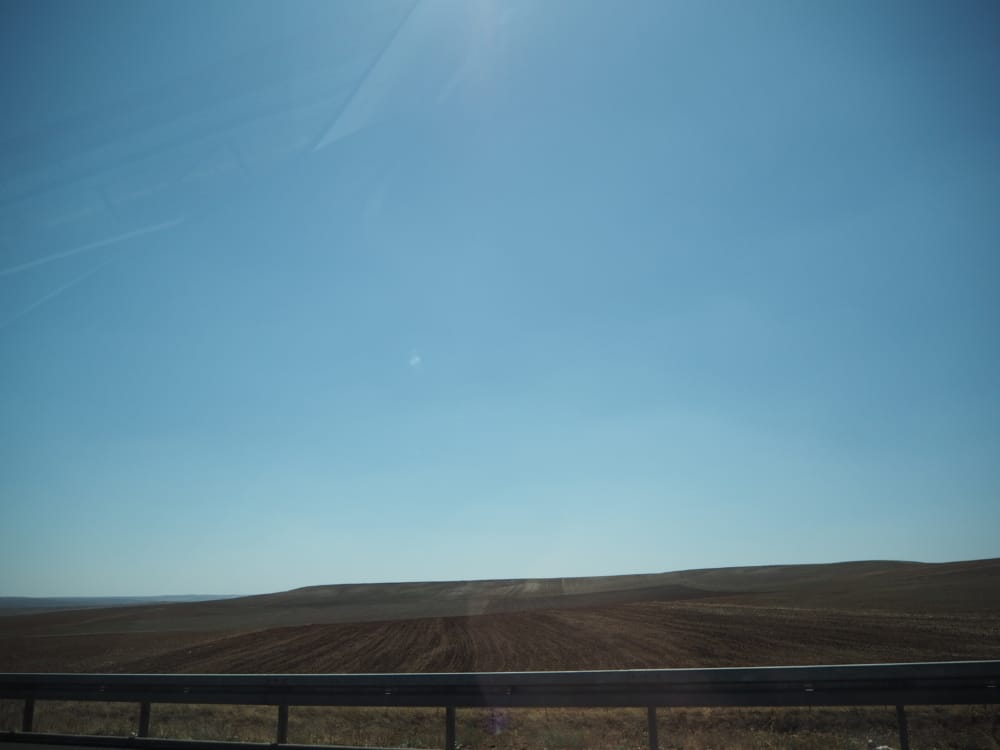
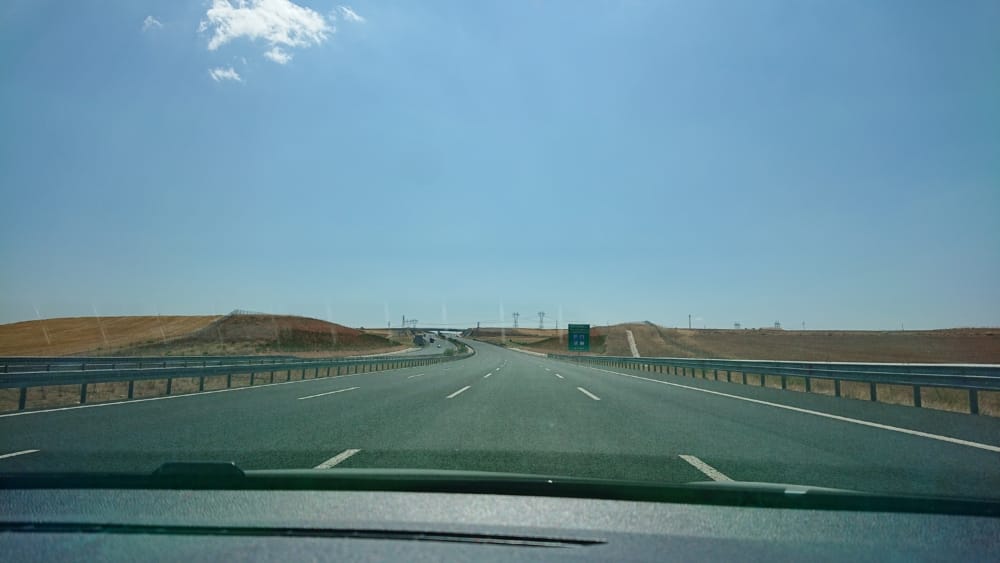
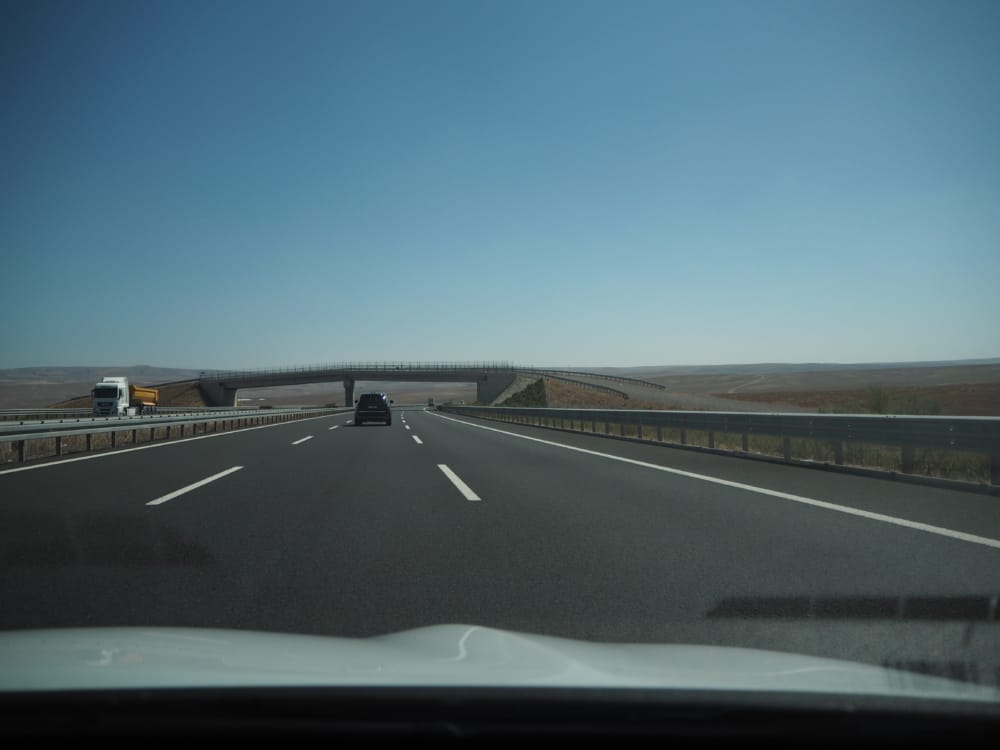
something yummy, potato in it,
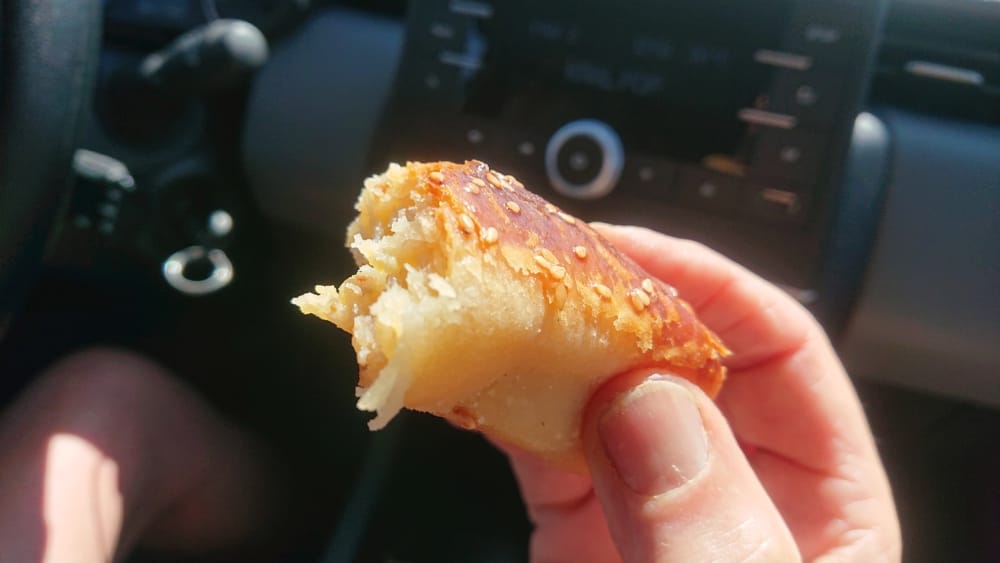
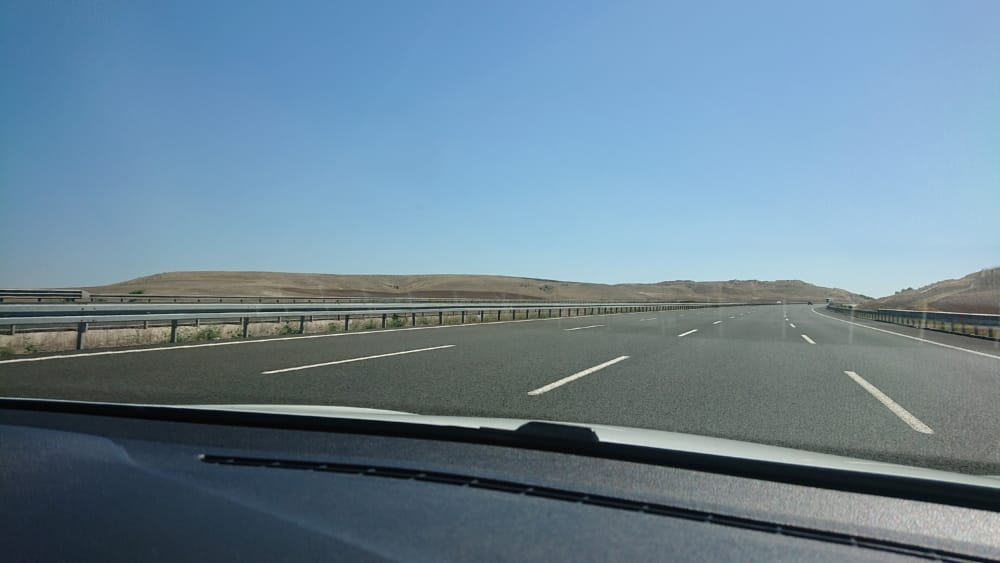
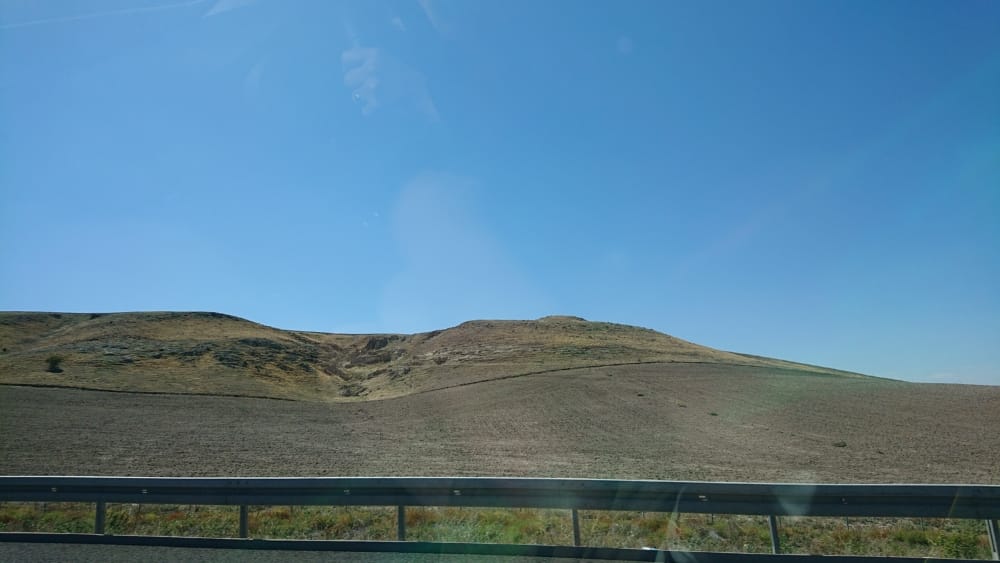
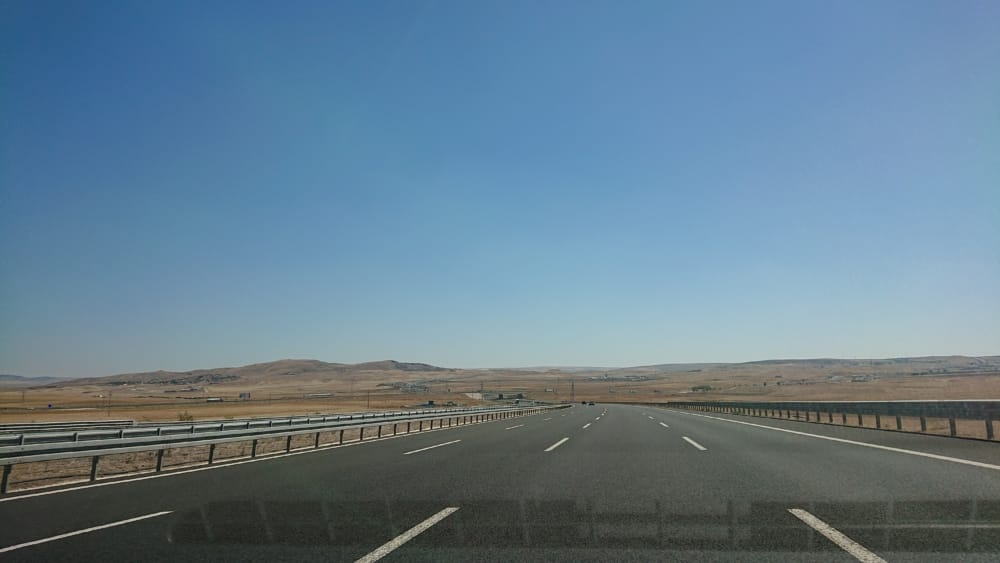
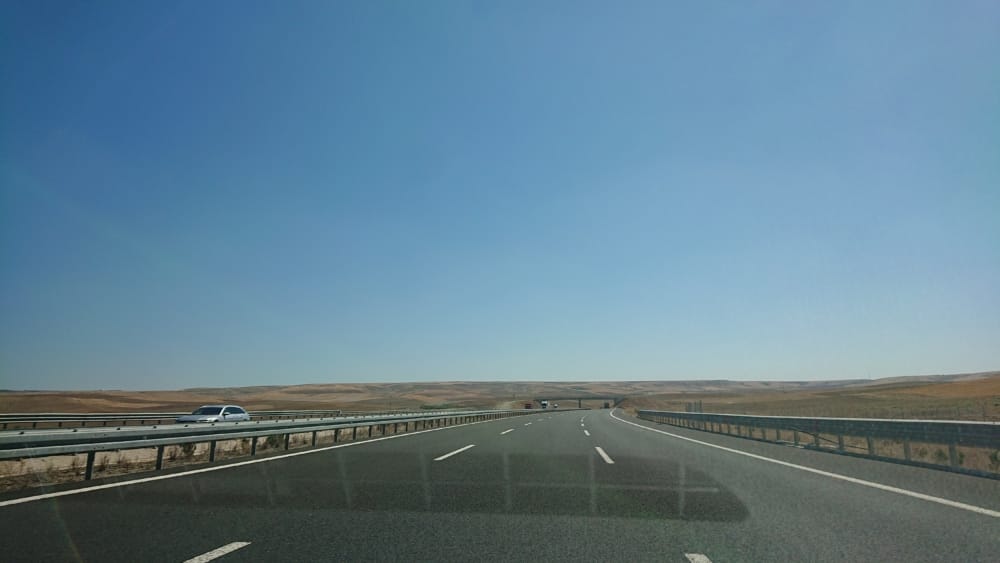
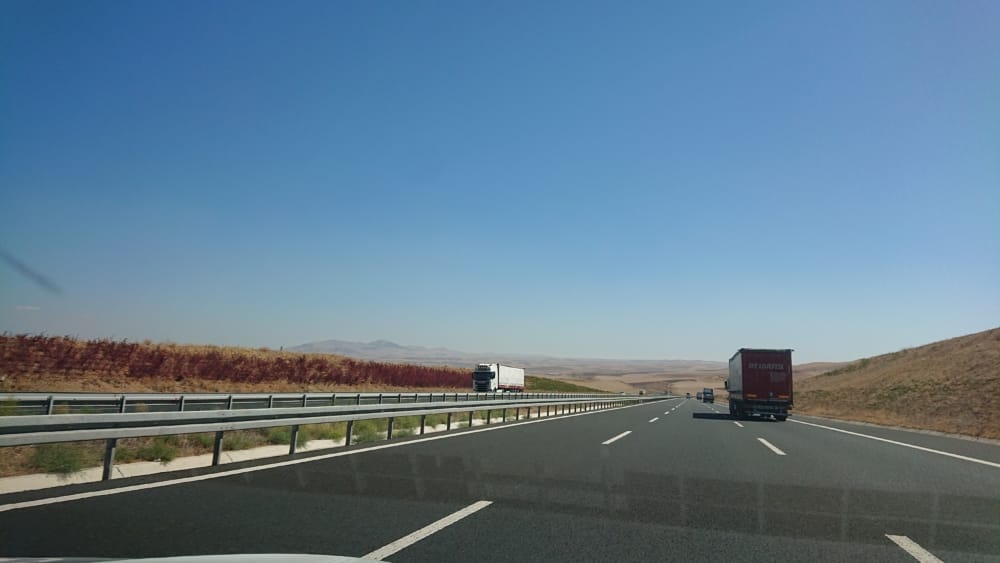
somewhere around here we descended gradually into a wide valley and to our right, something that looked like a mirage but had to be water, or, that we thought was water, until on our left we saw a lake and told ourselves that what we had seen first must have been a mirage. It was not. It was Tuz Gölü, a special environmental protection area (SEPA), source of all of Türkiye’s salt, enough, at 3,755 square kilometres, to export. This from UNESCO,
The Lake Tuz protected area in Turkey is amongst the most saline lakes in the world following Dead Sea, while representing the richest and intact halophytic steppe vegetation in Europe, more diverse and valuable biodiversity representing one of the most outstanding halophytic steppe plant sociological characteristics pattern dispersed on an extremely large area on the earth. The area holds a main genetic source for animal and probably human nutrition for future as it inhabits many important crop wild relatives. In addition, the site is also one of the best habitat to explore crop genetic sources of crop relatives for genes used in developing salt resistance varieties in many domesticated plants., It is expected that dry and other similar harsh conditions will be more abundant in future due to climate chance to be faced by all humanity. Lake Tuz in Turkey serves as being one of the major wintering habitats on the migratory pathways of very important waterfowls for large populations by its large, calm surface areas.
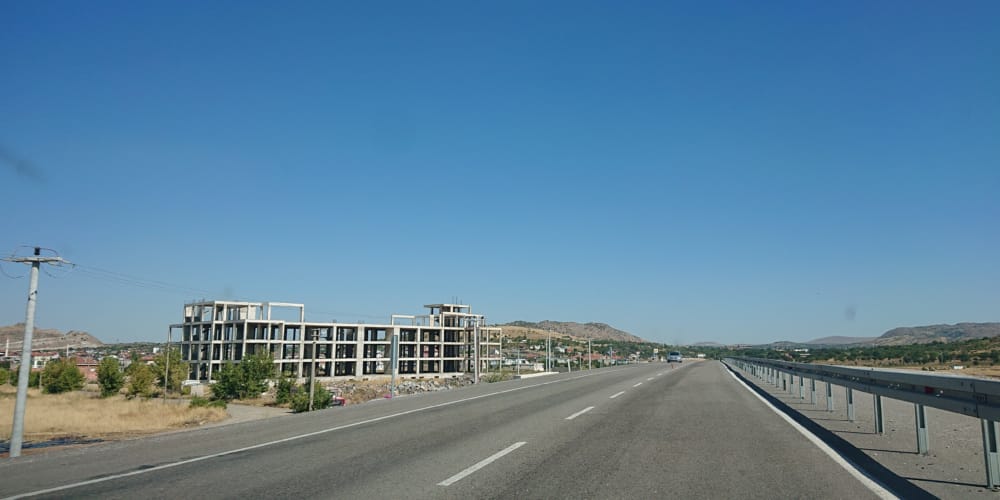
Nevşehir, from Soviet-style to 1980s-faux glam blocks, ugly fugfugs.
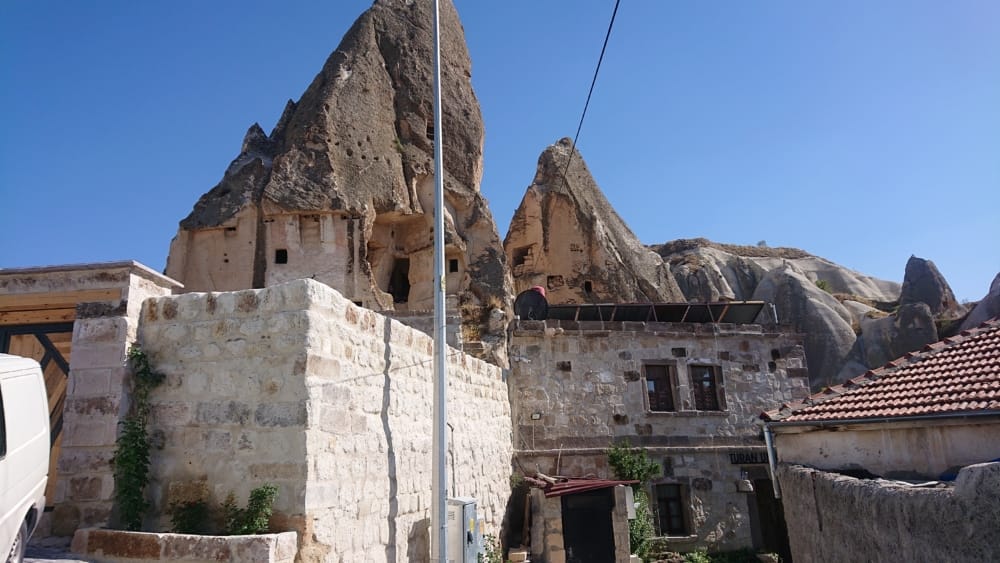
And off the side of the plateau down into Flintstone Disneyland. Göreme. A World Heritage Site.
… we laboured up the hill to the outdoor museum. And marveled less at the natural anomaly which the Vegas-y vibe counteracts than at the paintings in the many many churches. This part of Anatolia being home to Gregory of Nyssa, Saint Basel, who proselytised for a common-people’s church.
… at the Outdoor Museum, calling it so permits the fleecing of visitors, the gathering of buses, the stalls offering relief and mementos on the way in… Hyperindustrial Tourism.
… which is not to gainsay the value of that for which the toll is paid: Here it is Byzantium that is celebrated although the name is rarely spoken,
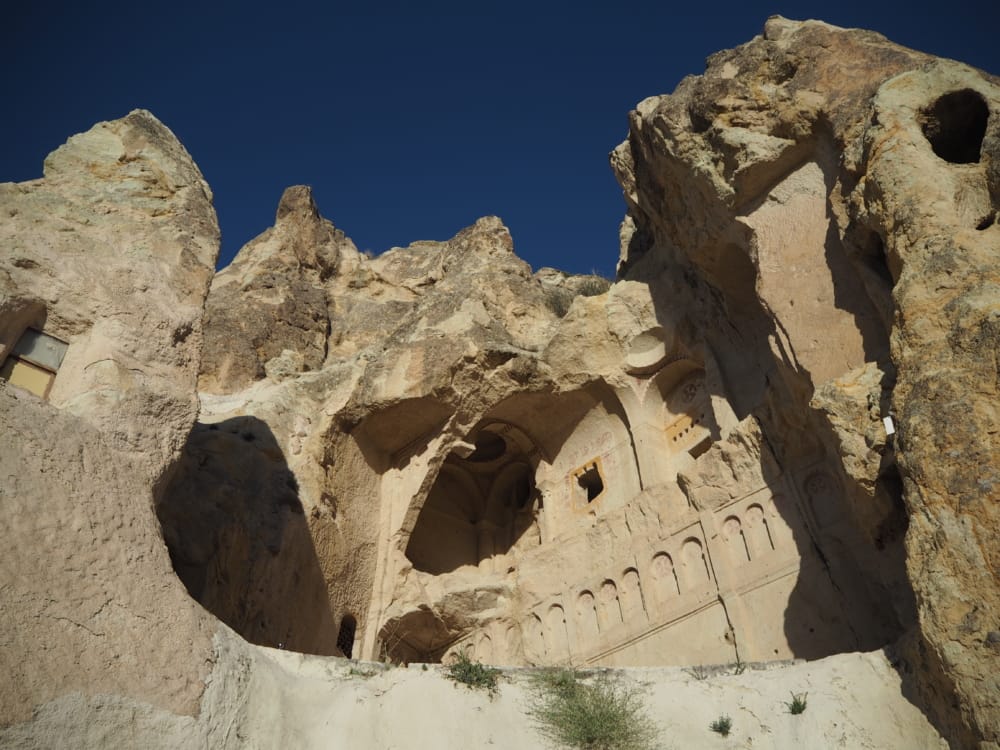
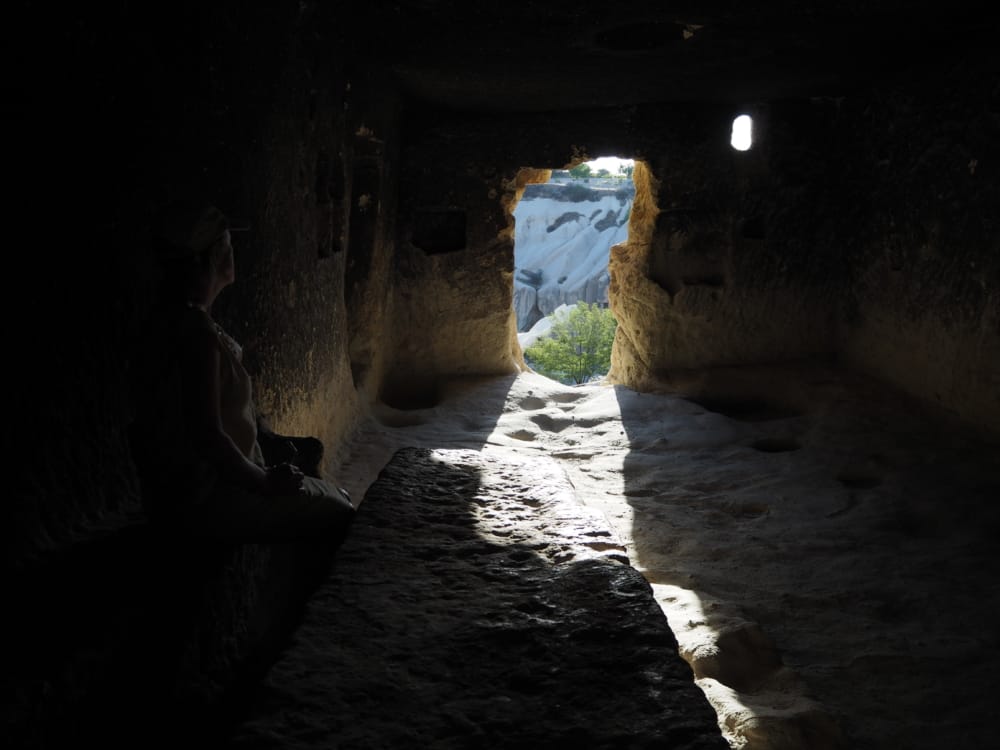
The Painted Church, extra ₺,
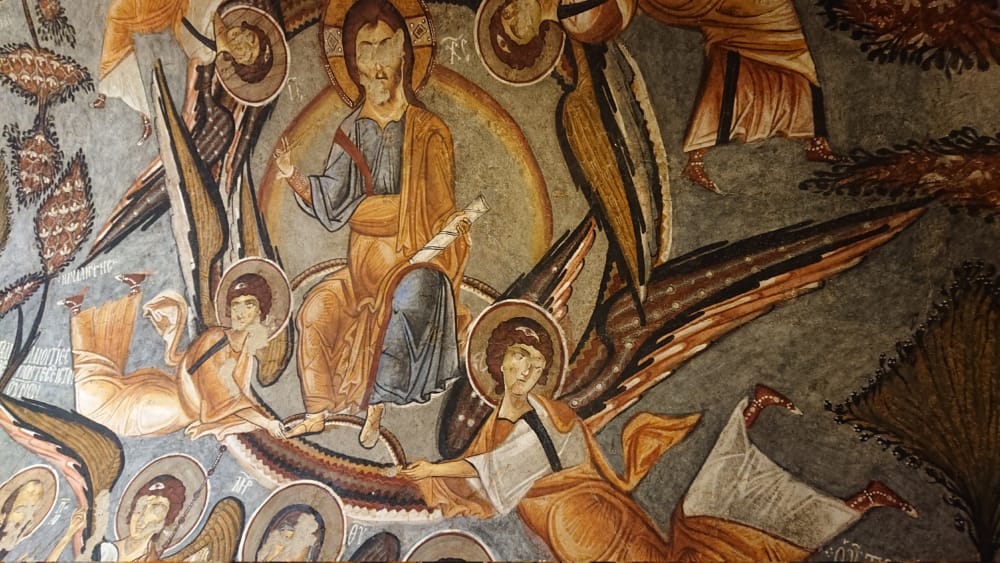
defacement, despite it, vibrancy, personality … and later, when we have seen more antique sites, “It makes no sense to speak of medieval apropos Byzantine culture” … such works as this are continuous with the late classical period for over a thousand years of this culture. The ‘loss’ amounts to something in the Eastern Roman, Byzantine Empire that differs from that of central Europe from 600 and the Carolingian to the 13th century cultural renaissance, loss of classical refinement … and this despite the sacking of Constantinople by the Western barbarous hordes, about whom it was said that the priests were as much butchers as the rest.
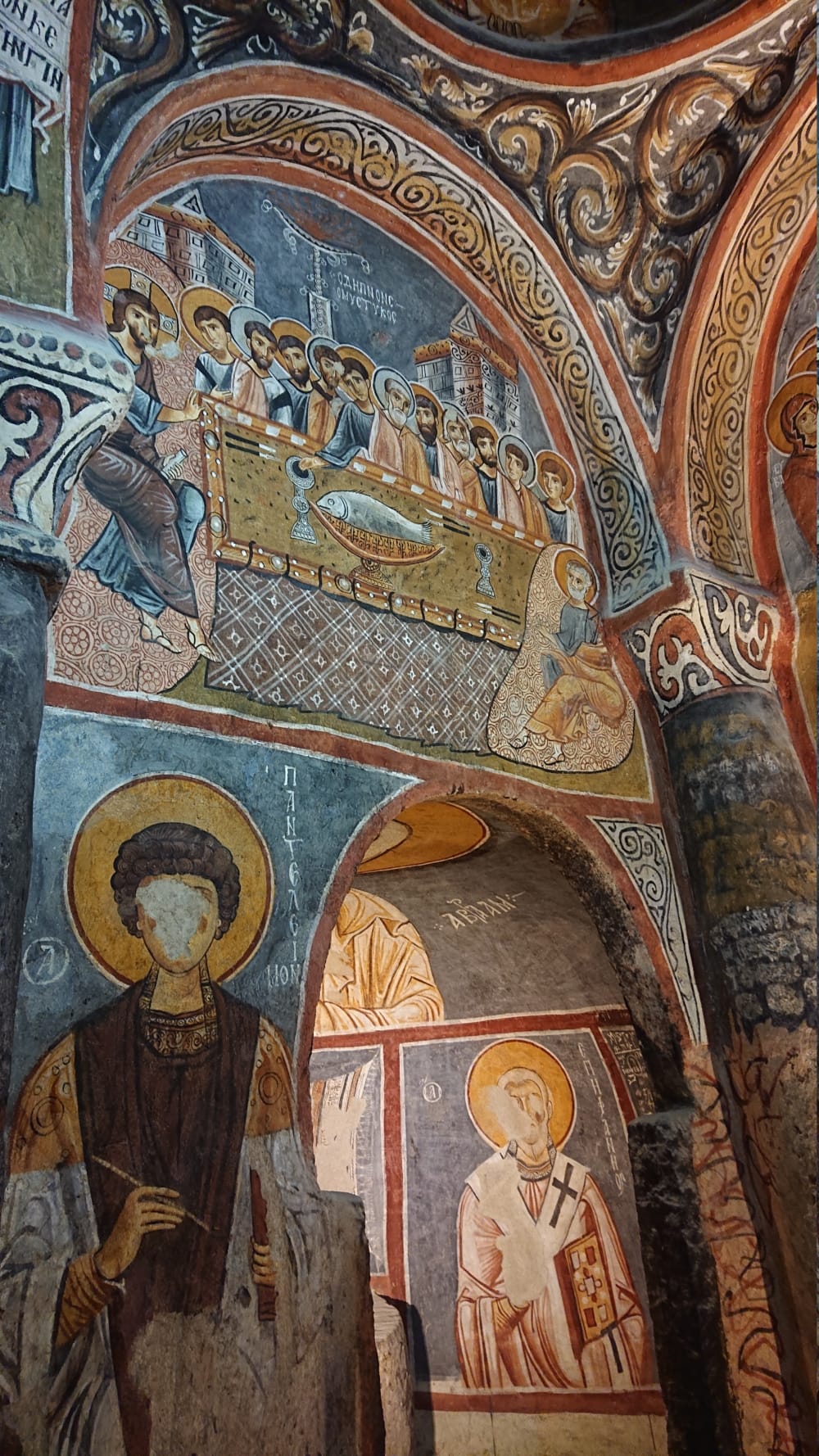
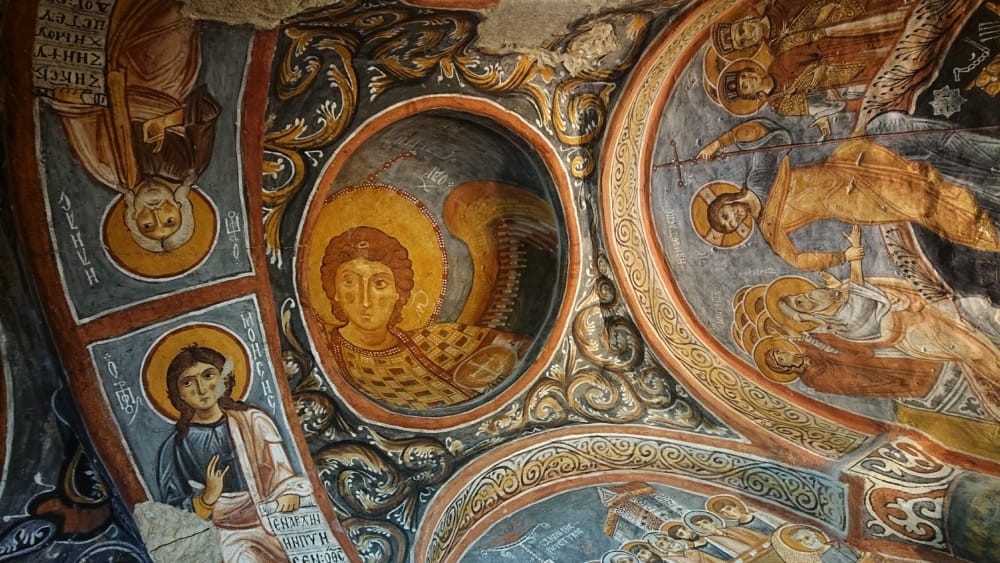
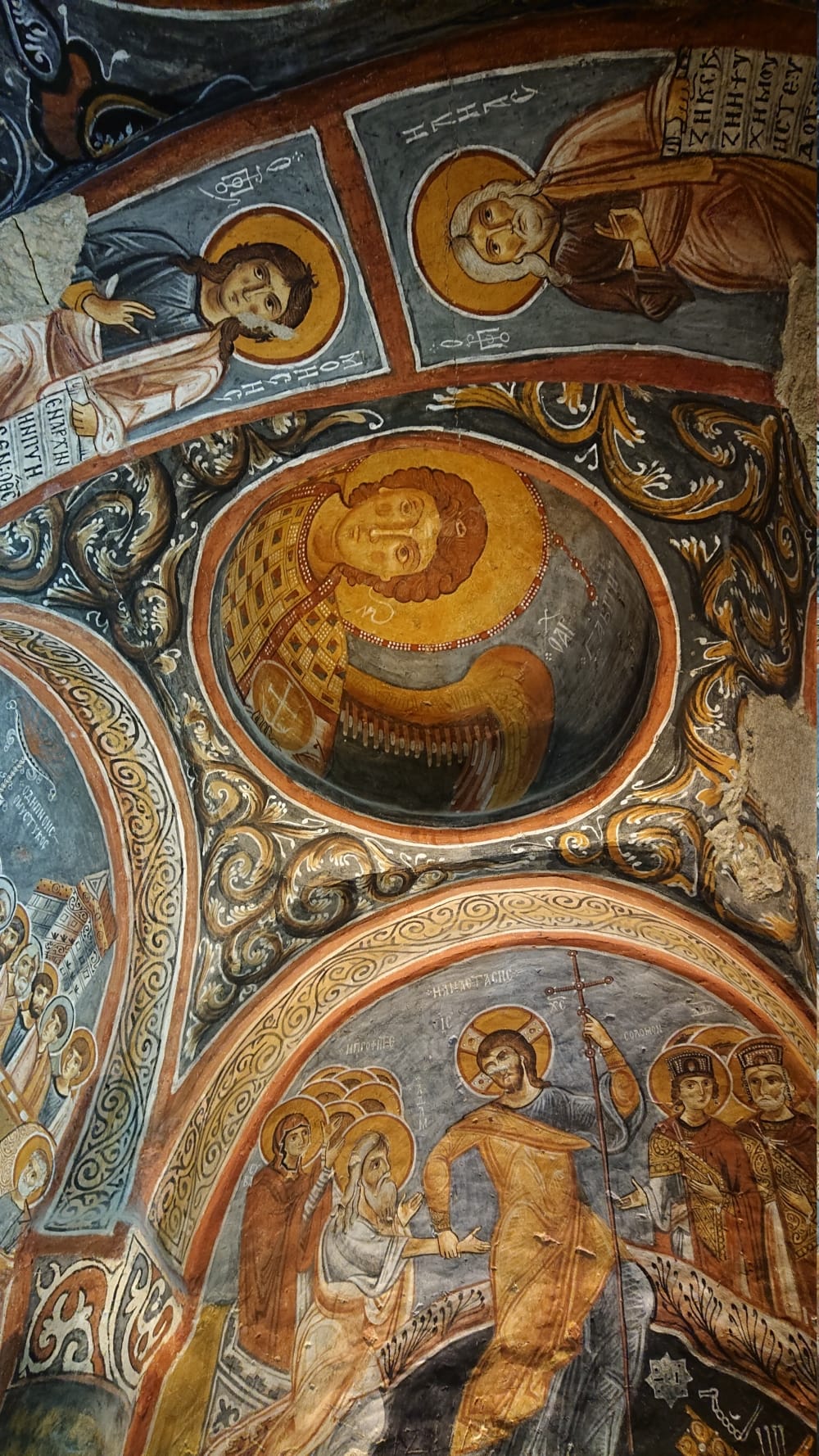
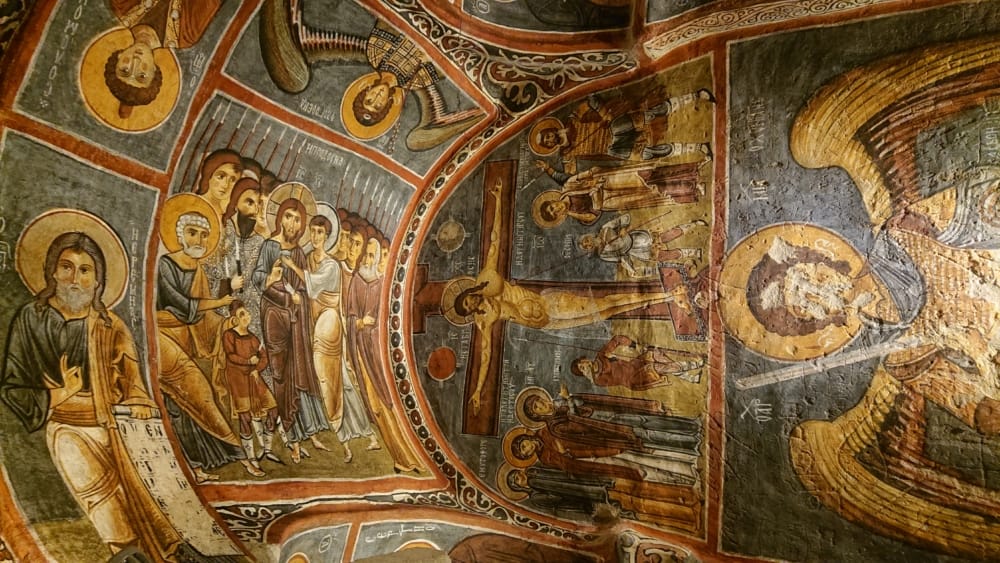
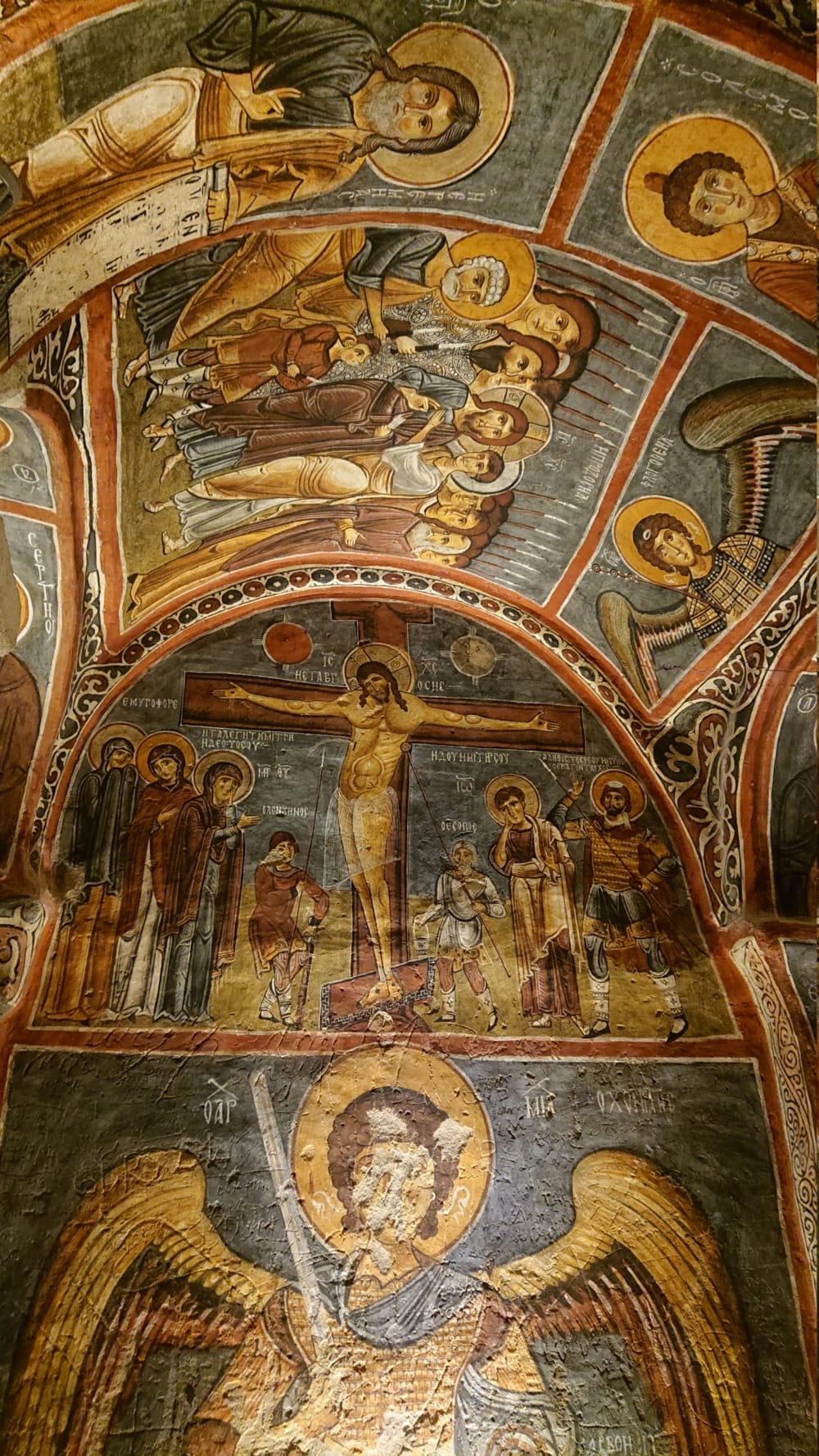
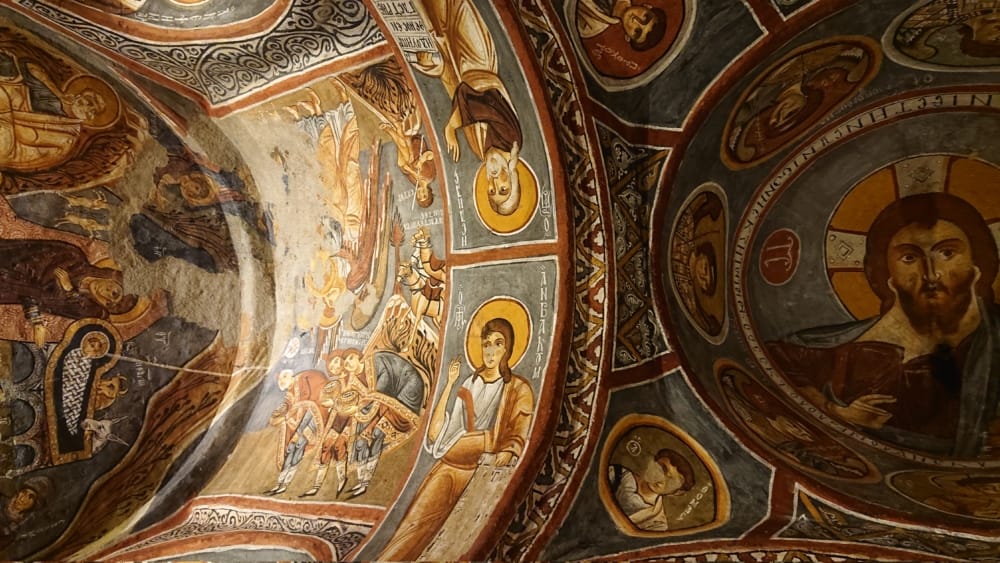
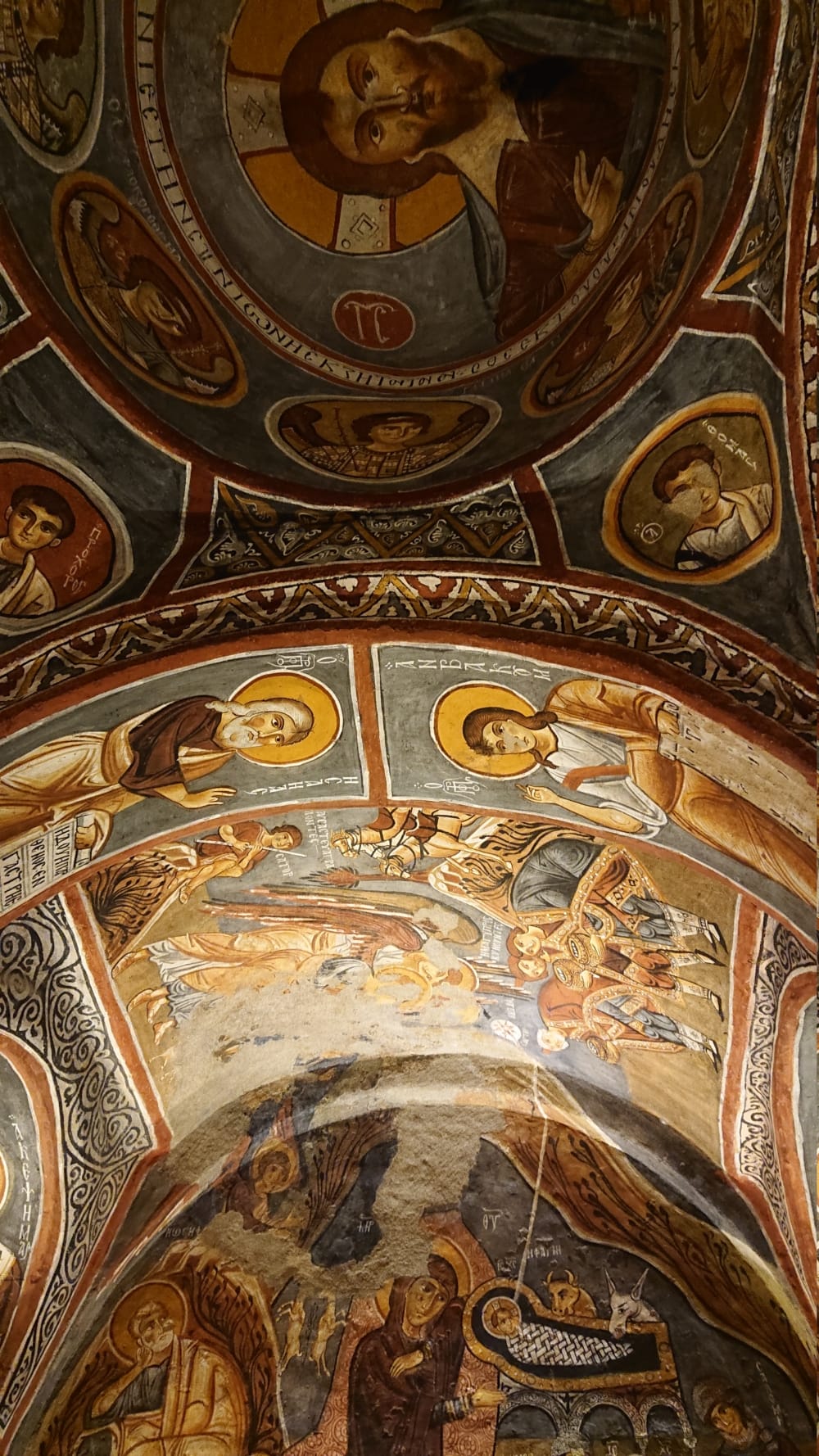
In addition to the Painted Church, the Dark (Karanlık), Sandal (Çarıklı), and Apple (Elmalı) and Barbara …
The anti-Byz vibe is not difficult to pick up from the following:
“Göreme Valley contains at least 60 churches, 45 refractories, hundreds of burials graves, and countless agricultural rooms. Several other painted churches are located near Göreme Valley, such as El Nazar Church, Saklı (Hidden) Church, Ayvalı Monastery, and Zindan Church. …
“In pre-Christian Roman times, Göreme Valley was a burial location with rock-carved tombs. As the Roman Empire Christianized, the burial spaces became Christian in character. …
[not the whole story: there is a sense here that Christianity was a scourge on the classical world; this is to cover for the destruction of Byzantine culture and the Eastern Roman Empire that both nomadic peoples like the Turkmen and Western Imperialists, like those of the 4th Crusade or Venice, as well as bad management, were responsible for. The sultans for their part were of greater civilization and more tolerant of the Greek-speaking Christian population than the Western Europeans.]
“… around the 800’s, monks formed small monasteries in the area to pursue the contemplative life. The valley had several advantages for monastic living. Spiritually, the area was considered “sacred” because previous saints were buried there. Geologically, the surreal, desert-like topography created a mystical, spiritual context, a common feature in Byzantine monasteries. And practically, the churches and living spaces were easy to construct.”
This should read, good and practical places to hide from the various invaders.
“… pilgrims enhanced the sacred reputation of the region. This, in turn, meant more people wanted to build a memorial chapel or monastery here. Thus, the three motivations of sacred burial, monastic life, and spiritual pilgrimage reinforced each other.” could read, like tourism.
[source]
This says nothing of what John Ash calls Muslim iconoclasm either. Interestingly the earlier post-schismatic iconoclasms, when the Eastern split from the Western Church (in effect splitting the Roman Empire between the Byzantines and Western Europe), have their sequel in the vandalism that occurs almost a thousand years later.
Look at this extraordinary pillar decorated with what appear to be nonfigurative motifs,
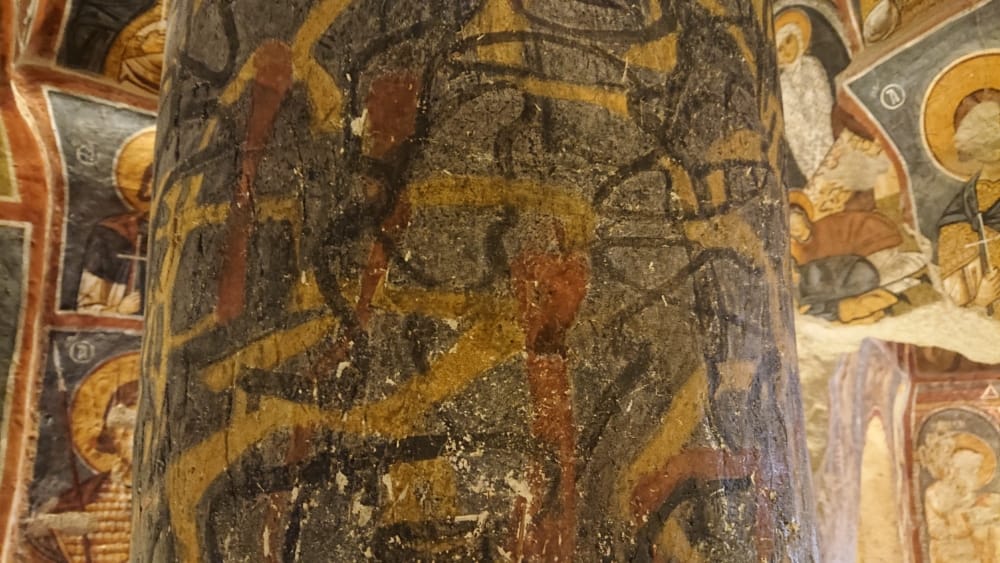
The following image is I think from Yılanlı Kilise, the Snake Church; note: photography, although there was no respect for the rule, was signposted as banned in the Byzantine churches; and see the following for a very carnal depiction of the birth of Christ,
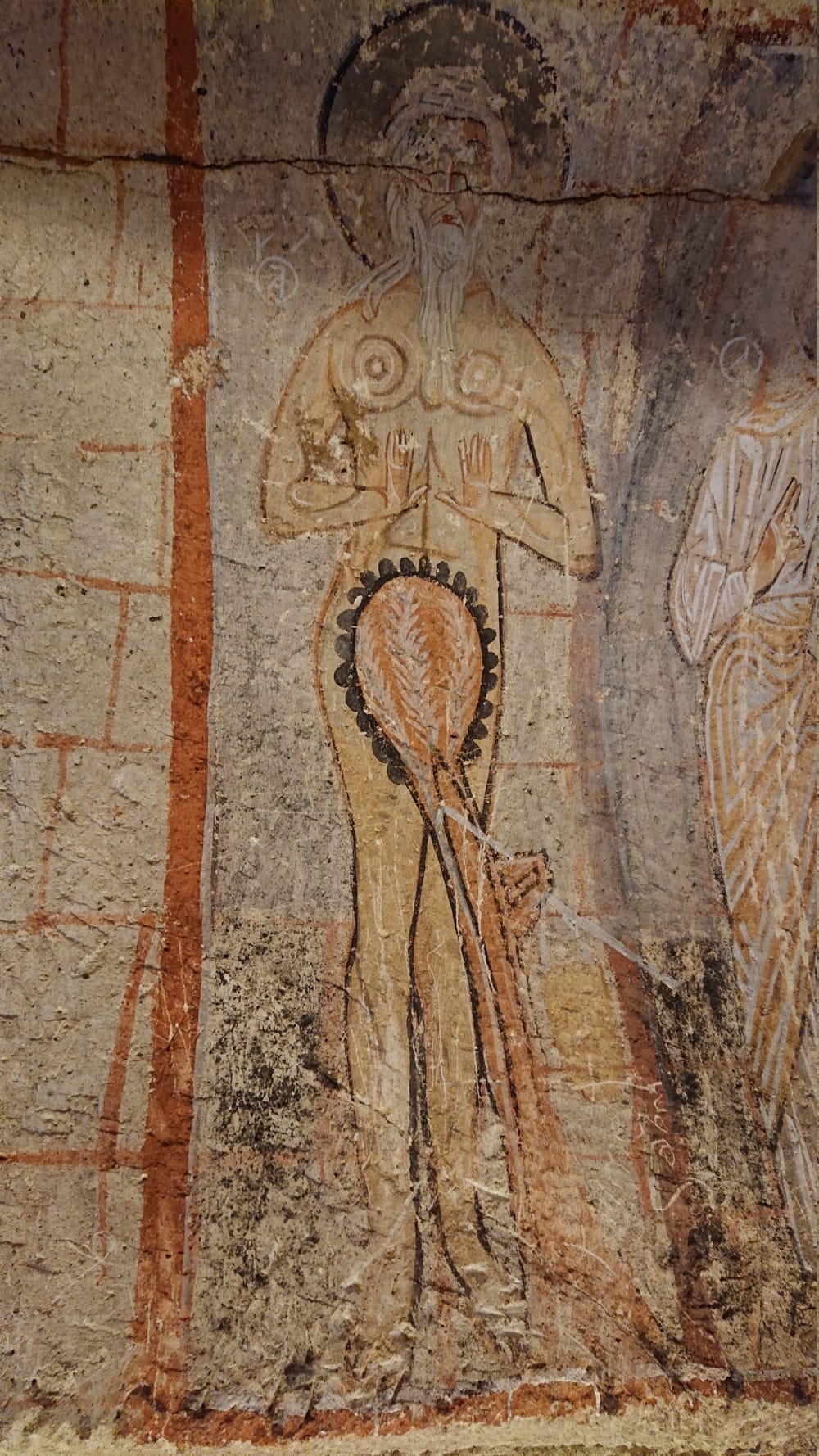
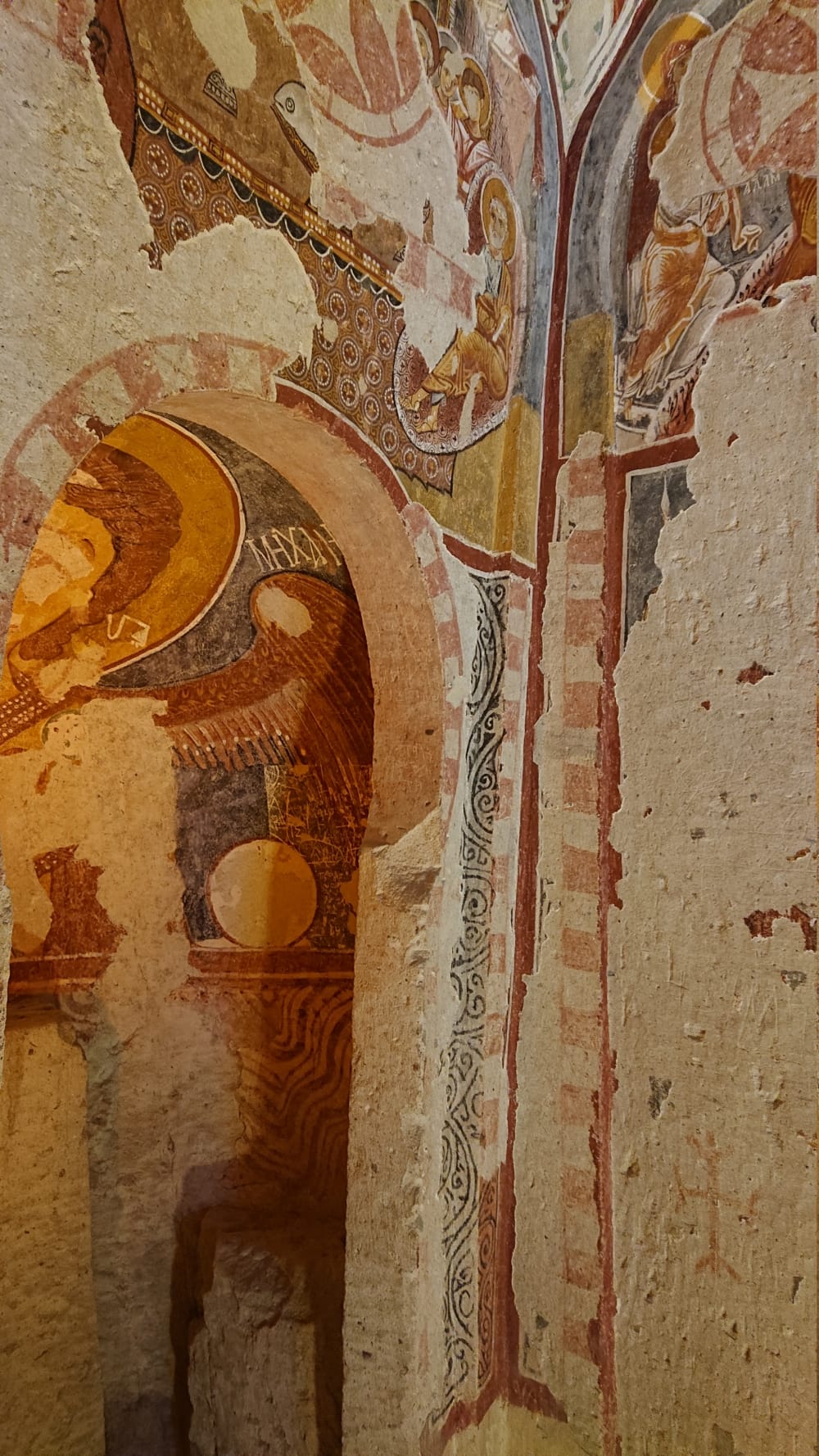
even here, dogs, in charge of themselves,
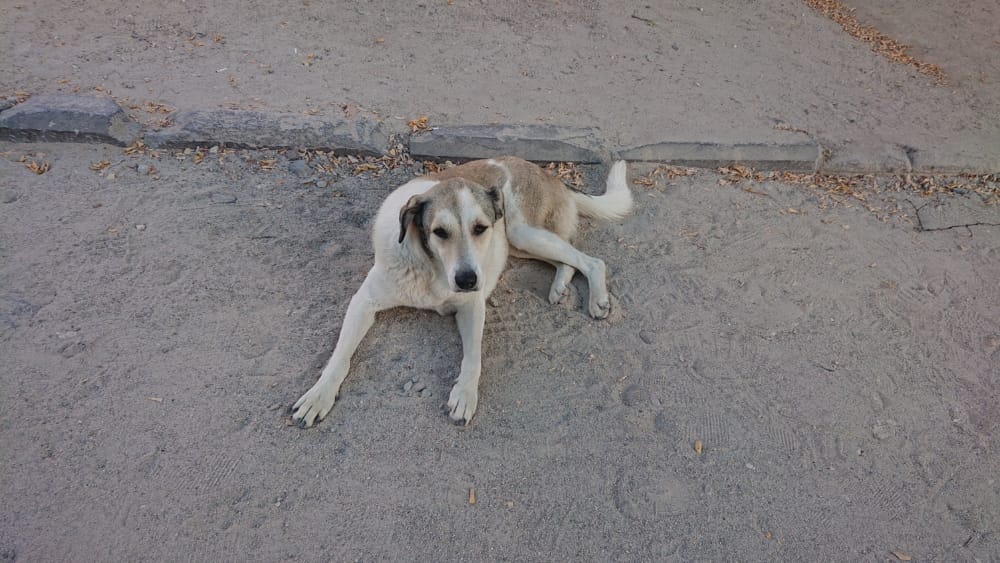
still time to sneak in a few more churches,
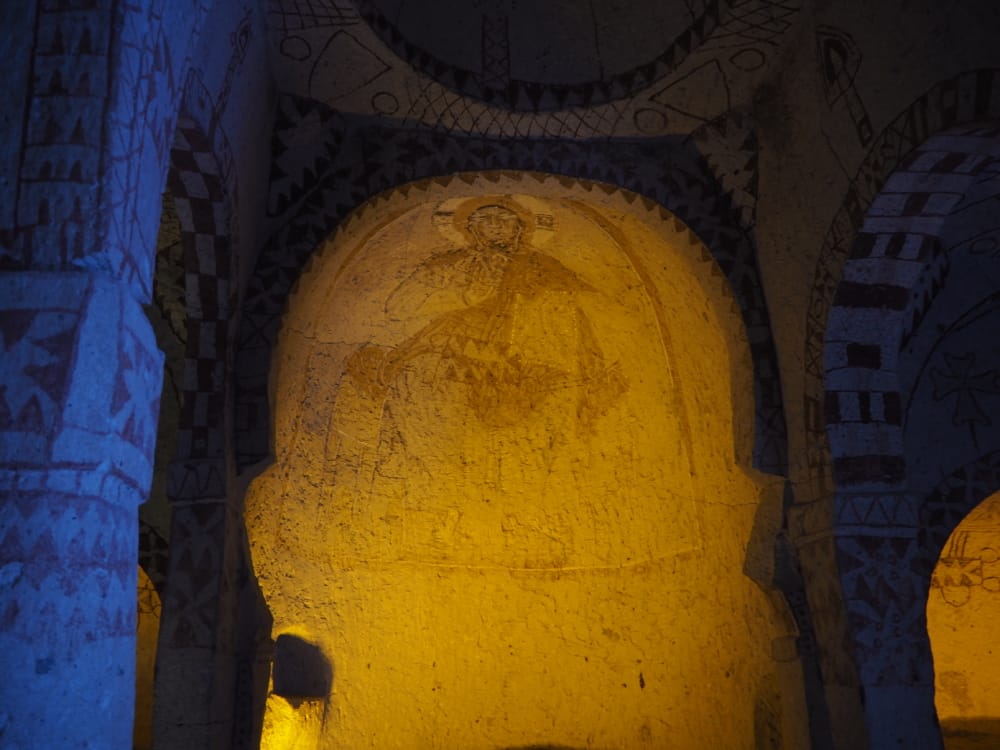
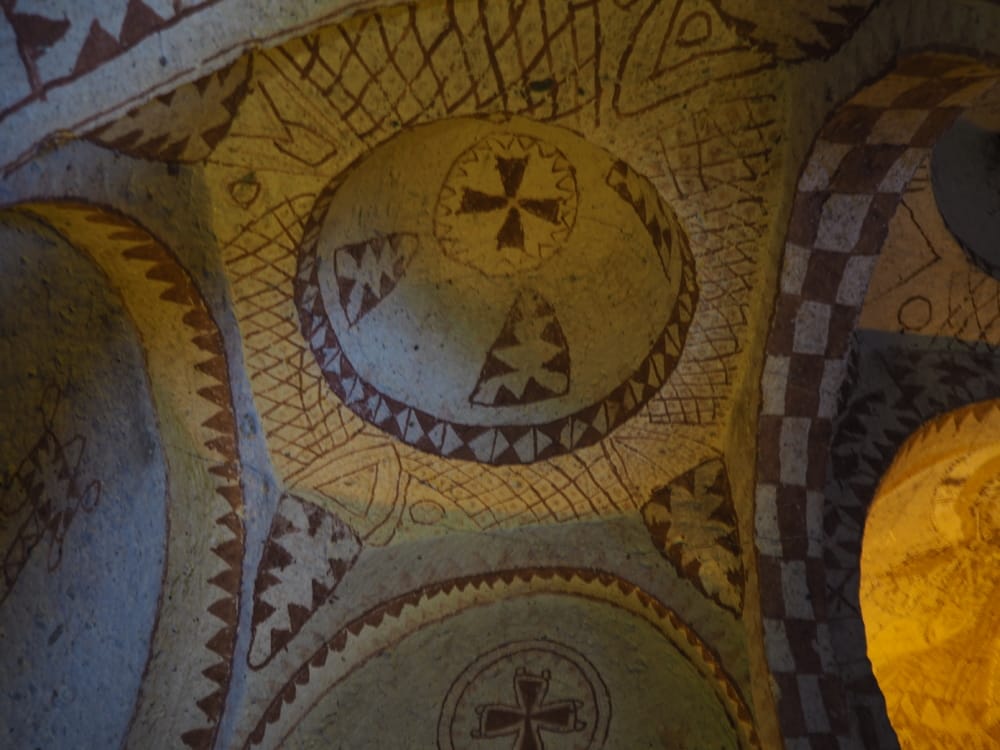
The red frescos go unremarked except to say that they predate the vividly coloured figurative work, which, in some cases has been stripped by later iconoclasts to expose them. In fact they date from the two earlier waves of Christian iconoclasm. They show no graven images.
And yet … here is the holy trinity, and, for not being a figurative depiction, there is something extremely touching about it,
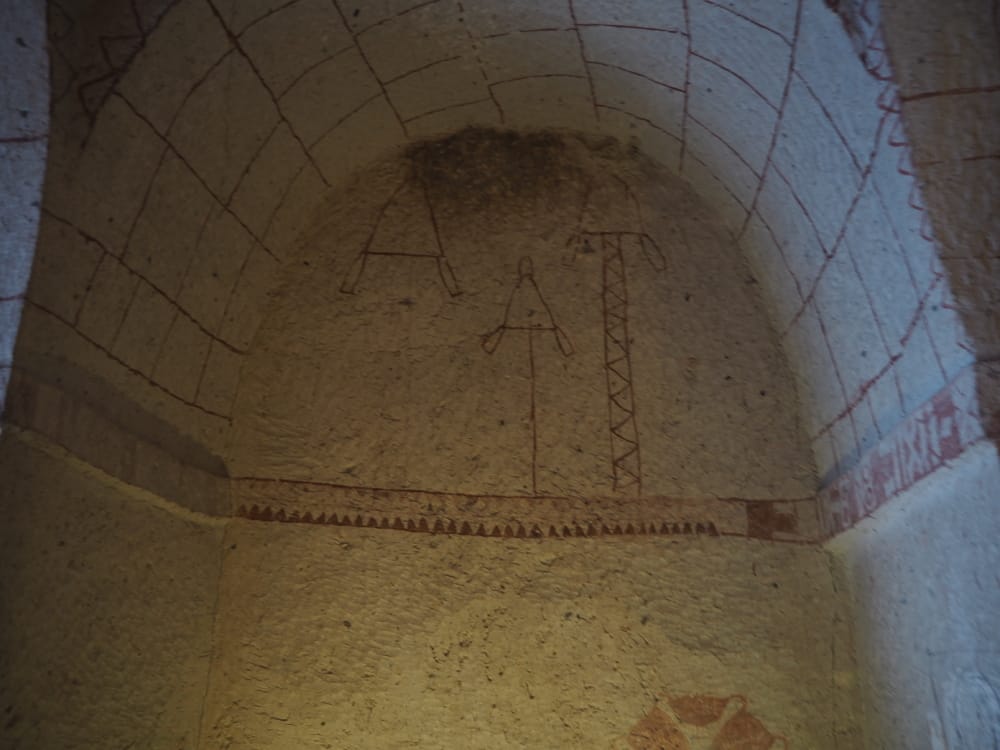
(And we might here invoke that iconoclasm in the West which happens after WWII, when direct depiction is once more suspect.)
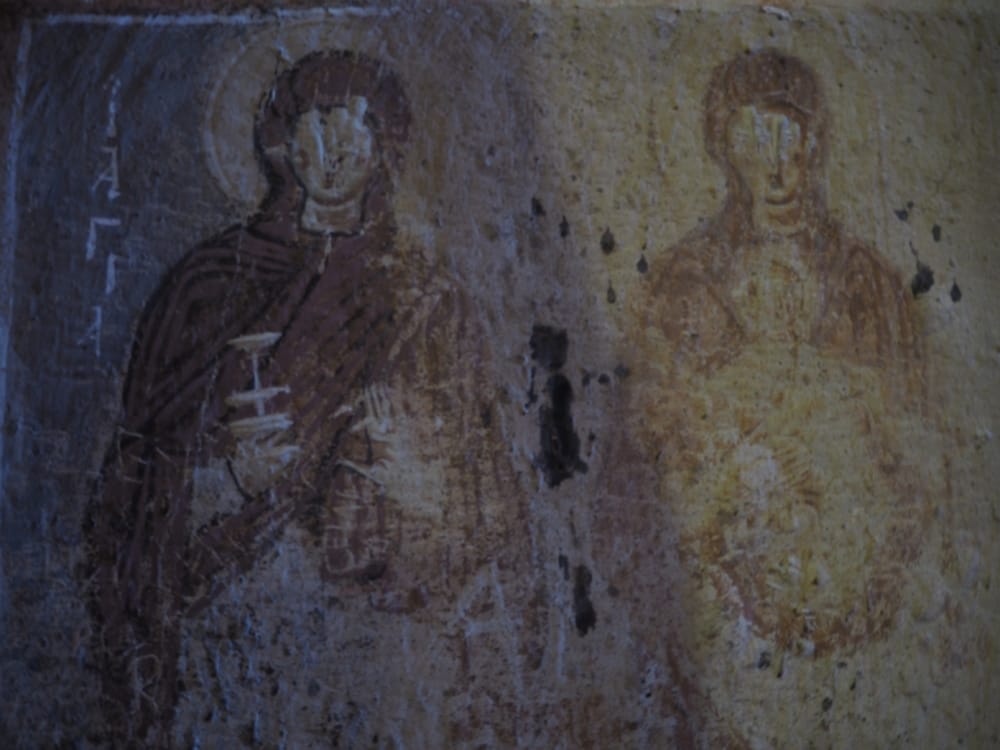
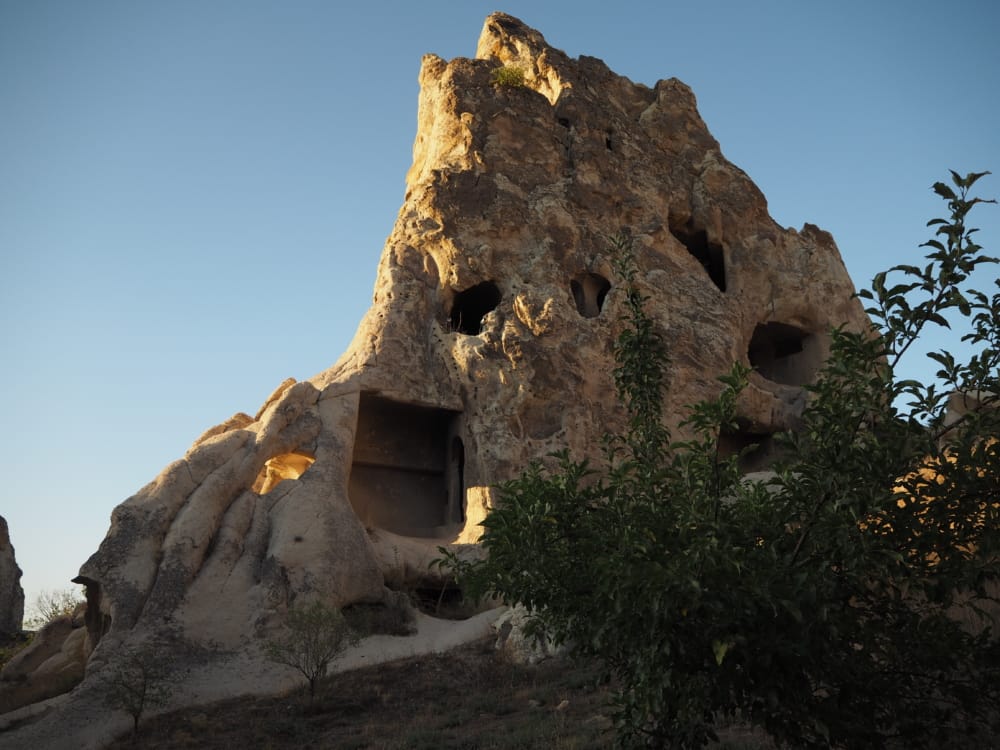
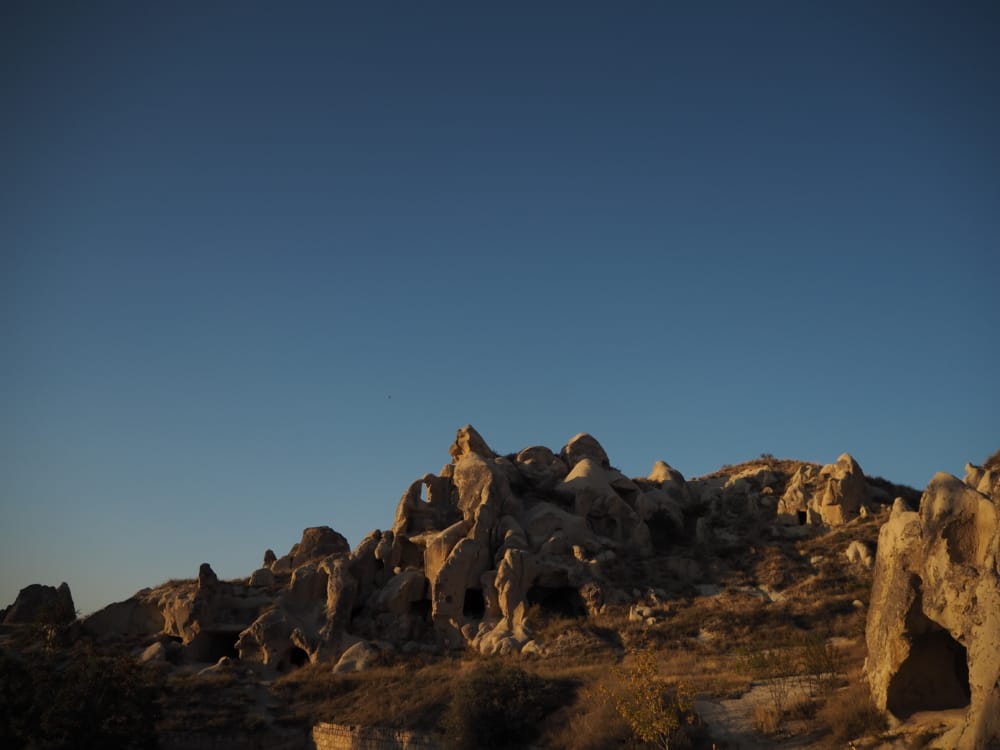
in the carpark,
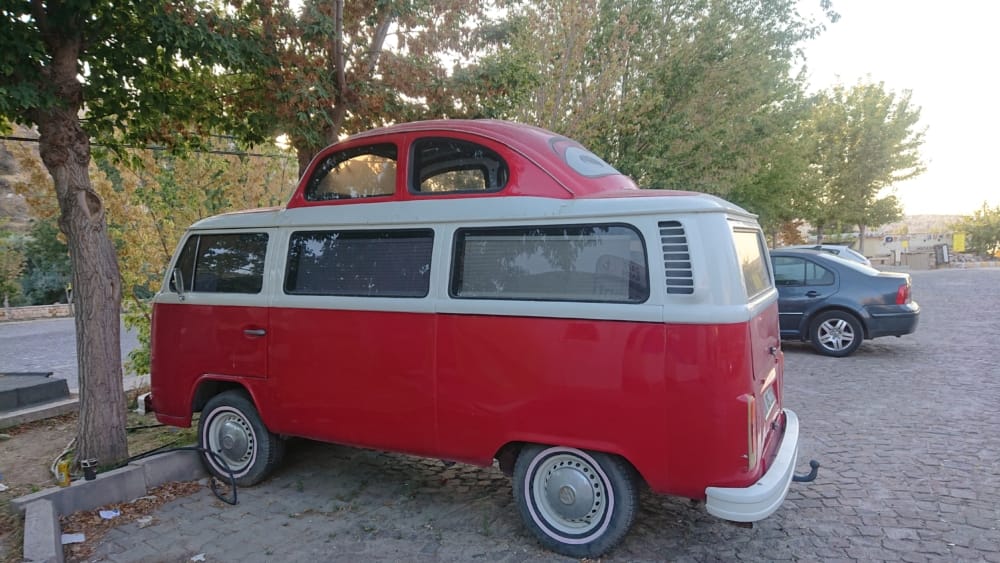
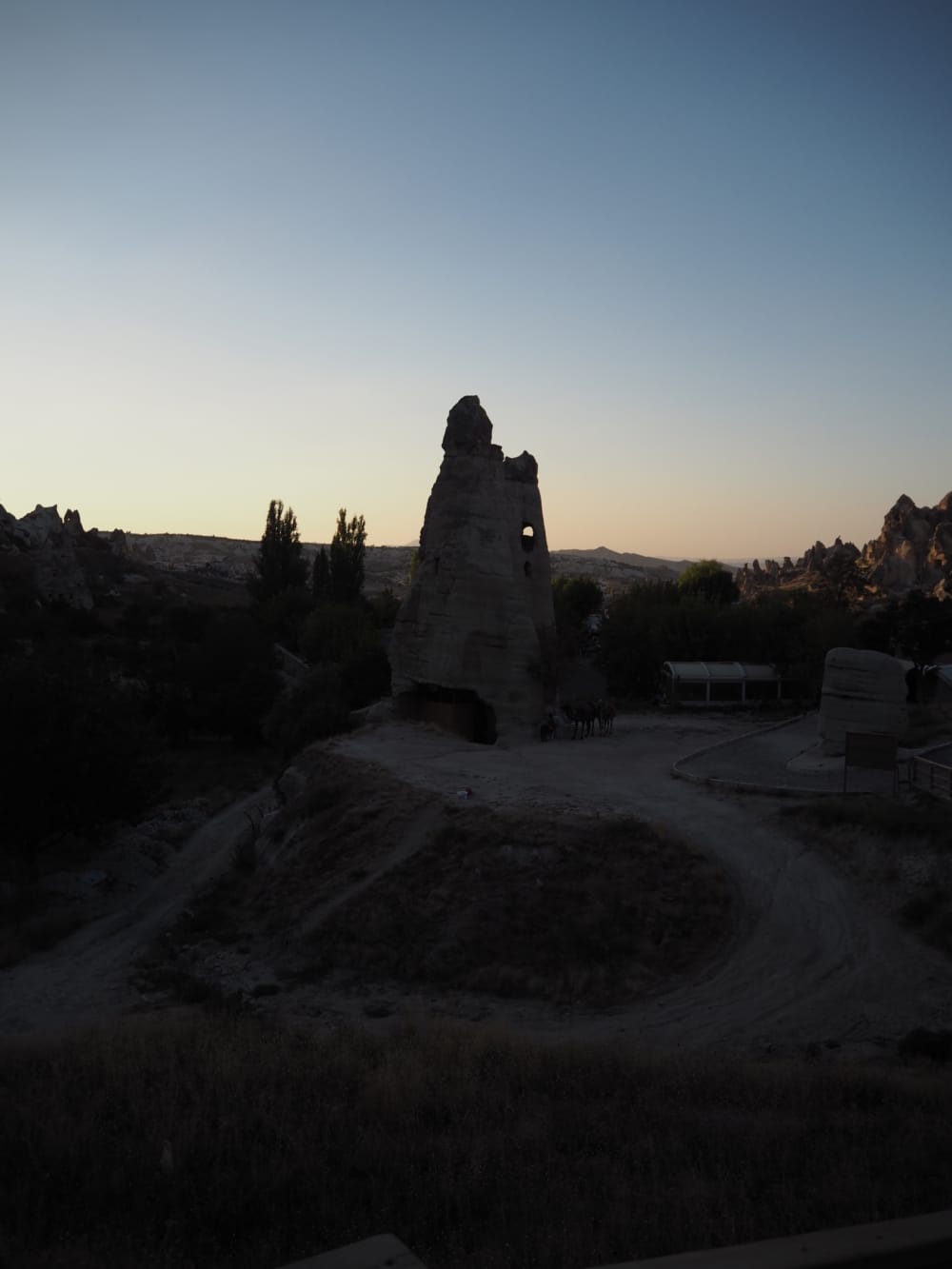
on the way out of the valley occupied by the cordoned Outdoor Museum, an English couple were dismounting their camels,
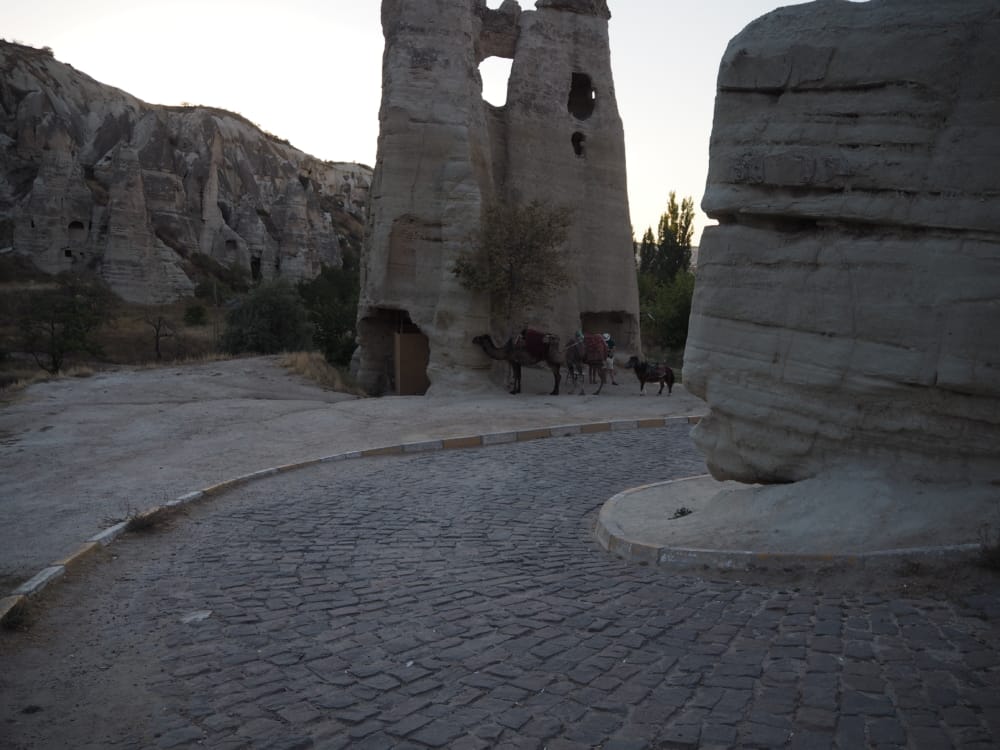
further down the road, a cafe business, a wreck of signage, and a steep partly paved track led to this view,
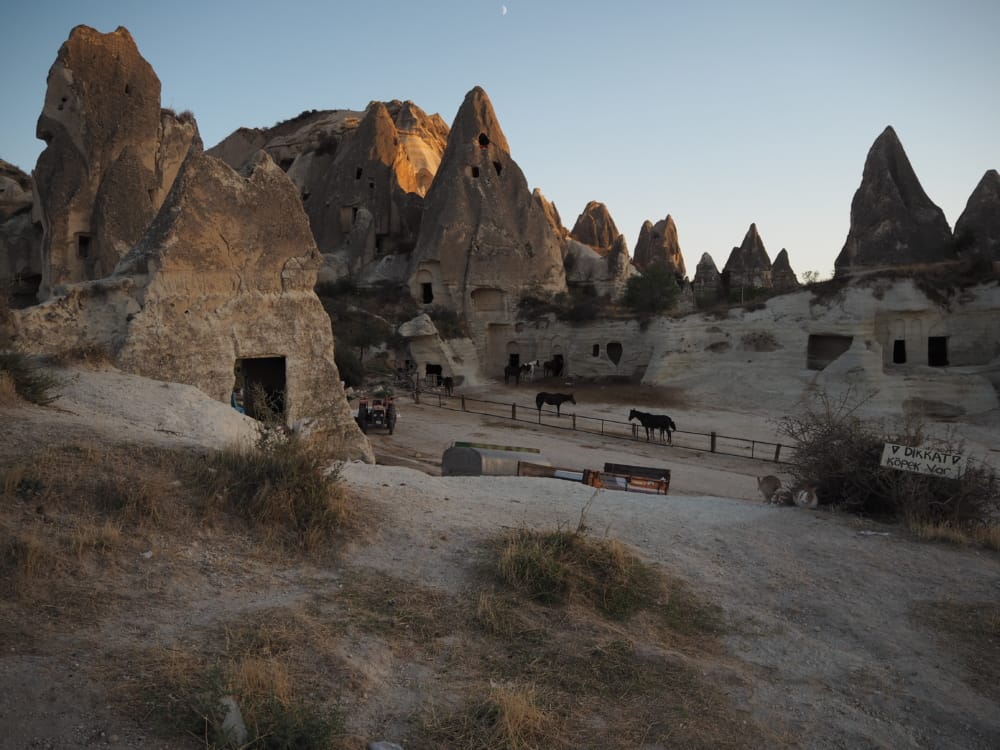
see the bunnies?
about the wreckage, I wrote at the time, “The virtue of Turkification being bringing an air of chaos to everything, the empty lot with a dog chewing a smelly bone, next to the glitzy hotel.”
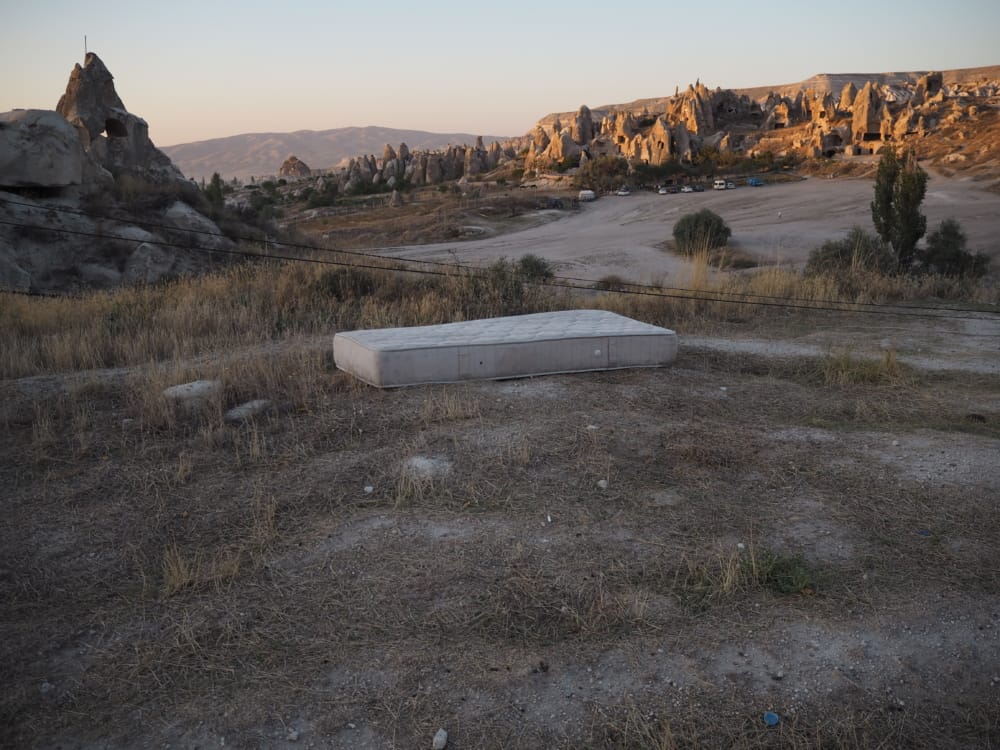
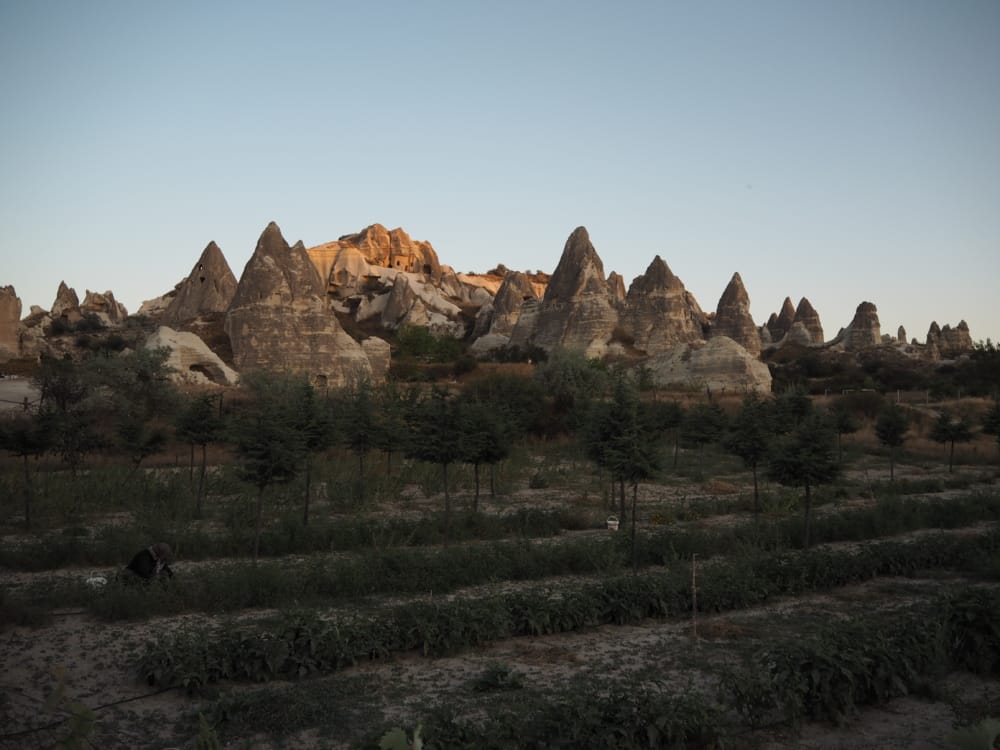
no graven images necessary as the caves now have satellite,
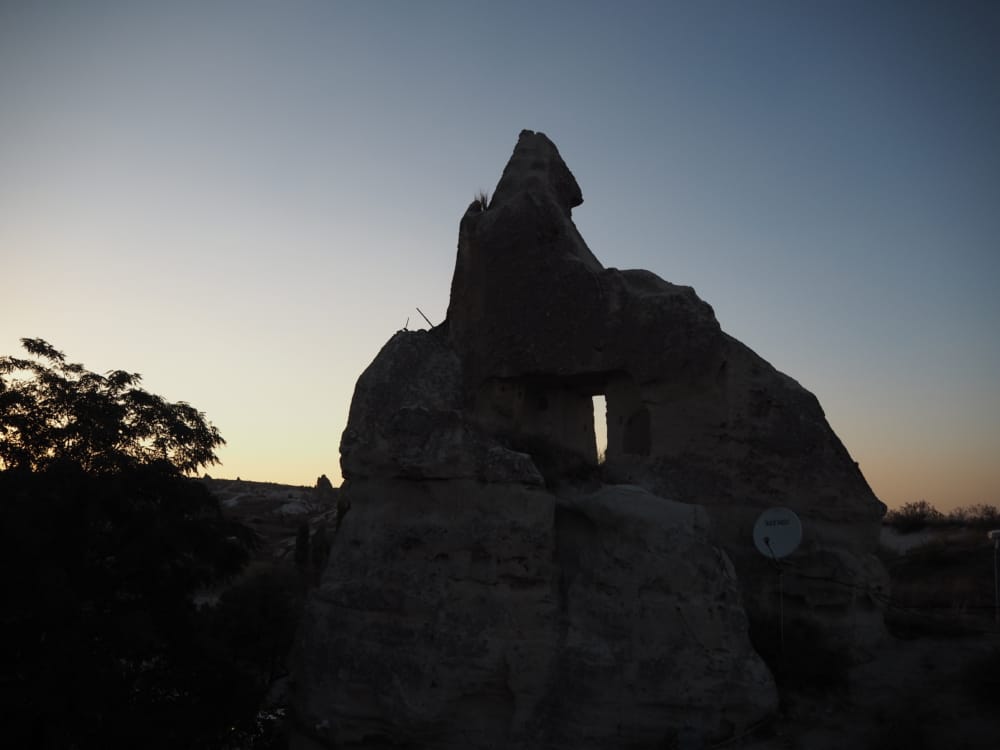
dusking as we reached our accommodation,
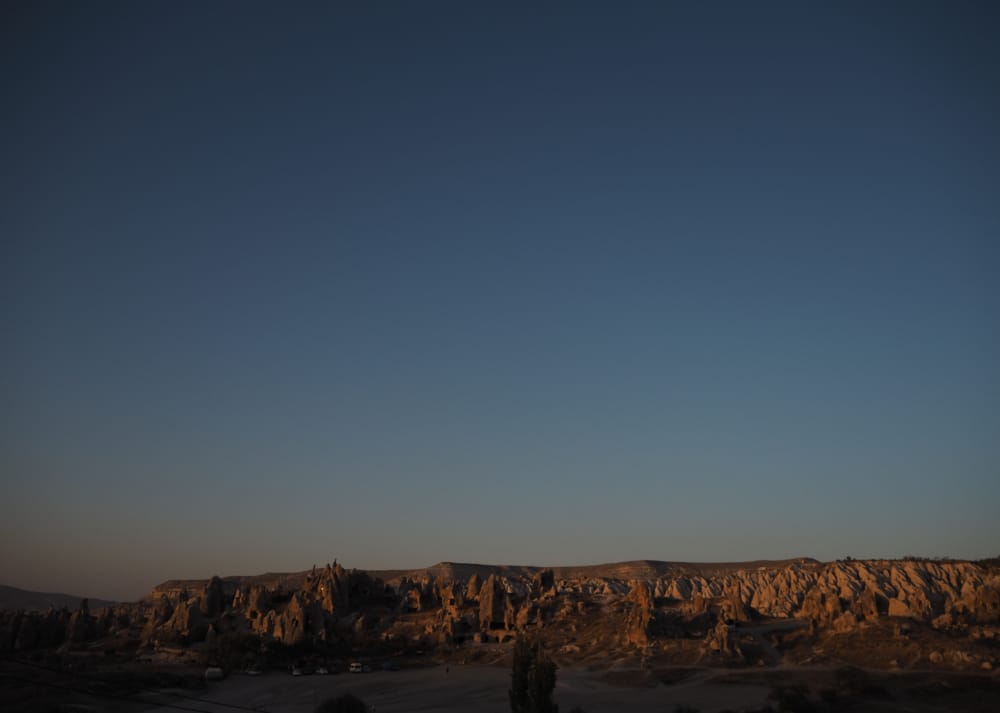
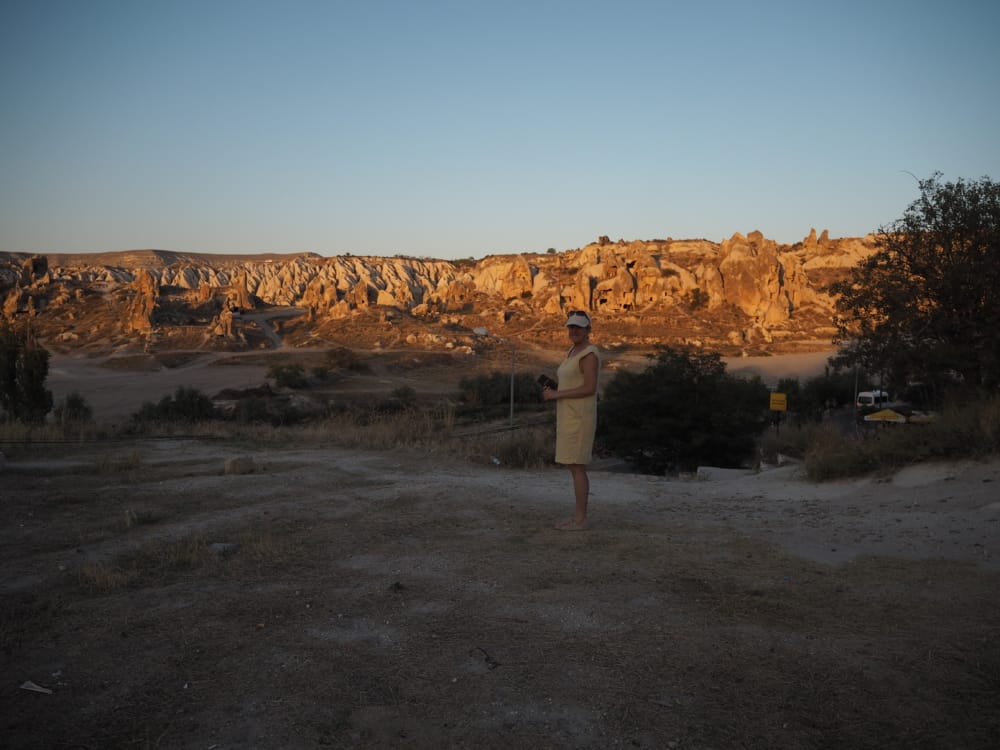
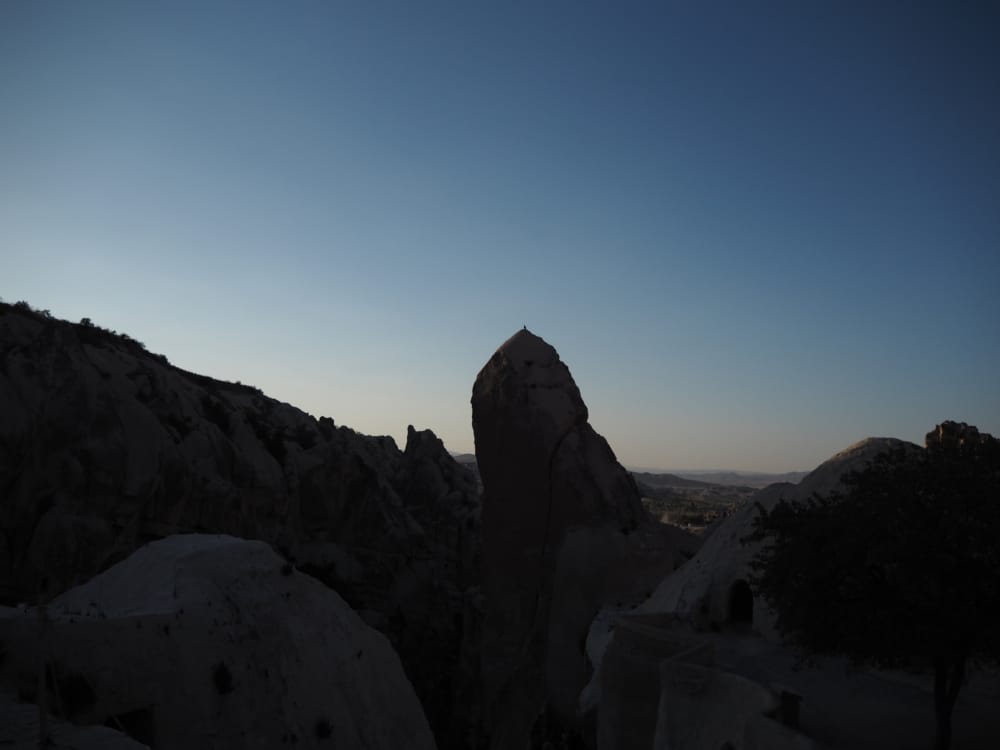
into town for dinner,
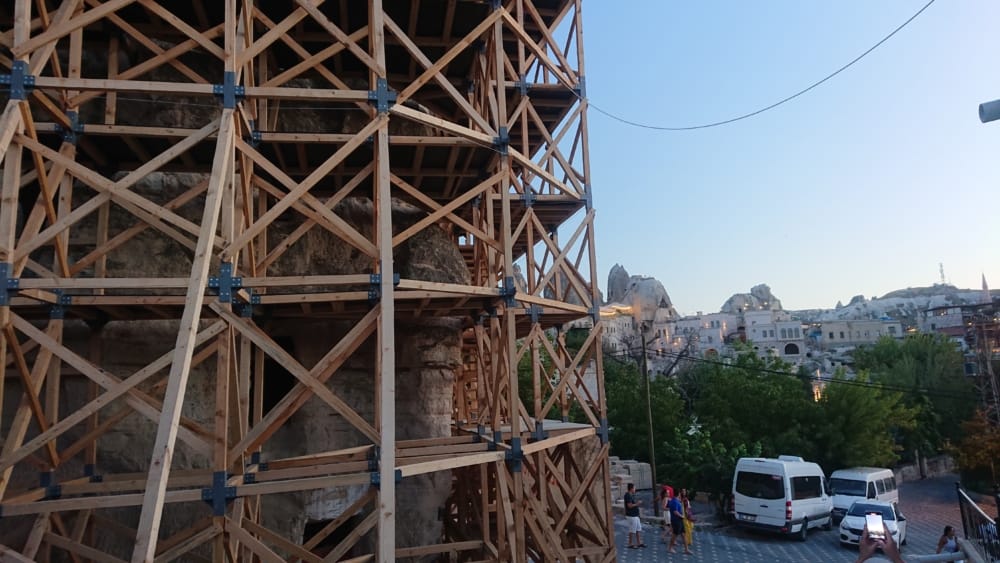
for which we chose a Chinese restaurant, thinking that we might be able to handle a little fried rice and, well, nothing else appealed…
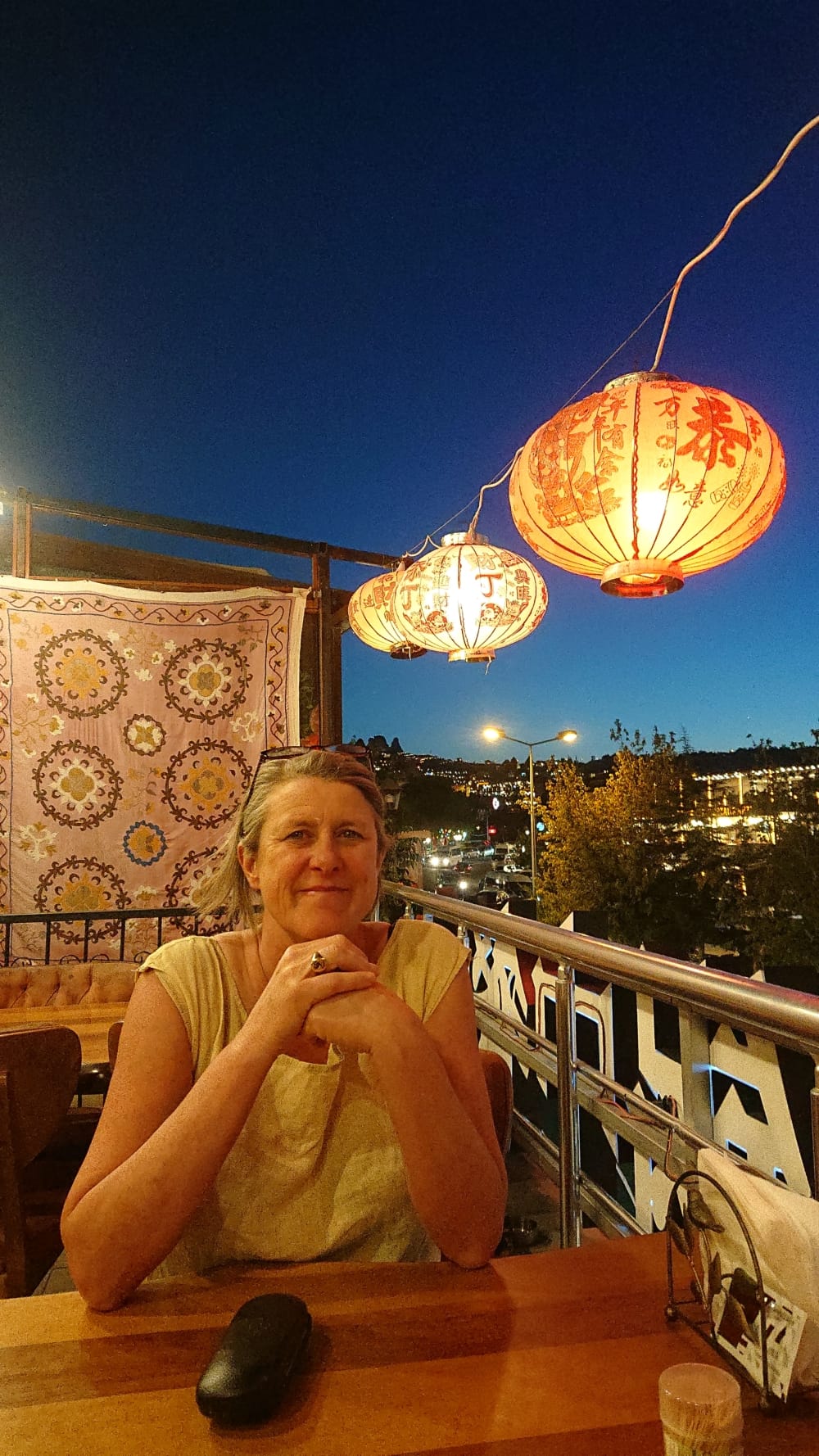
and on that experience, …”unapologetic rip-offs. A bill we had calculated to be ₺385 which was presented as 424. I had the cash out ready and disputed the total. You can have it for 400. What!? I attempted the üç yüz seksen beş is what it should be! but he came in with, service charge. What!? Service charge. It’s not on the menu … I wasn’t fast enough with, What service? There hadn’t been any. … but there’s a service charge at this restaurant. Relenting, I handed over ₺400.
“I write this from a room at the Stone Palace Hotel. Orhan is our host here. Like Pamuk. But I am not a writer, he says.”
